Beautiful cottage garden ideas to create a charming and organic outdoor space
Achieve a pretty country-style garden, whatever size your plot is
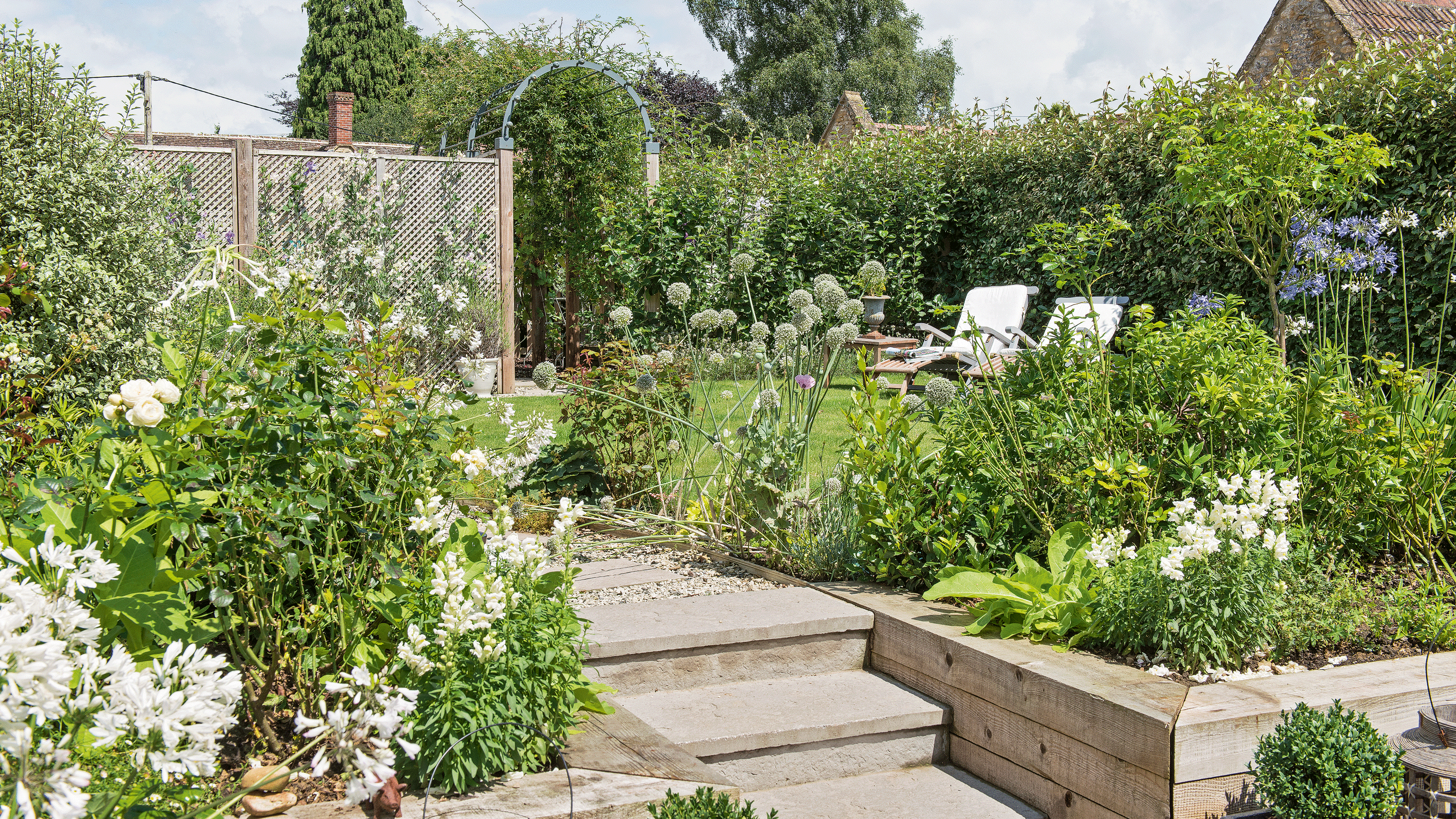
Ellis Cochrane
Cottage garden ideas are the traditional garden idea that just won't quit. They have over 42 million views on TikTok and over a million people using #cottagegarden on Instagram, if you need evidence of their ongoing appeal.
This type of garden idea is perfect for those of us looking to embrace nature – regardless of whether we live in a more rural or urban environment – and make the most of our outdoor space regardless of the size or shape of our garden.
‘Deriving inspiration from the cottagecore interior trend, we are seeing a significant recent trend in younger people who are romanticising rural living spaces, and are incorporating more countryside characteristics into their homes and gardens,’ suggests Nick Drewe, Trend Expert at Wethrift.
‘There is a heightened focus and need for creating a relaxing, calming space with more greenery, particularly amongst those who live in more urban areas. The trend focuses on creating a tranquil sanctuary with quirky characteristics, and with a heavy focus on nature themes and florals,’ Nick concludes.
All it takes is including a few key elements, like a relaxed planting style with a wildlife-friendly feel, for you to transform your garden into a cottage-inspired one.
Cottage garden ideas
The planting style is relaxed, creating a rich tapestry of colour from flowers and plants, including annuals and cut flowers. Best of all, there are no real rules to cottage garden ideas - you can grow what you love to create a garden that’s uniquely yours.
1. Select self-seeding plants
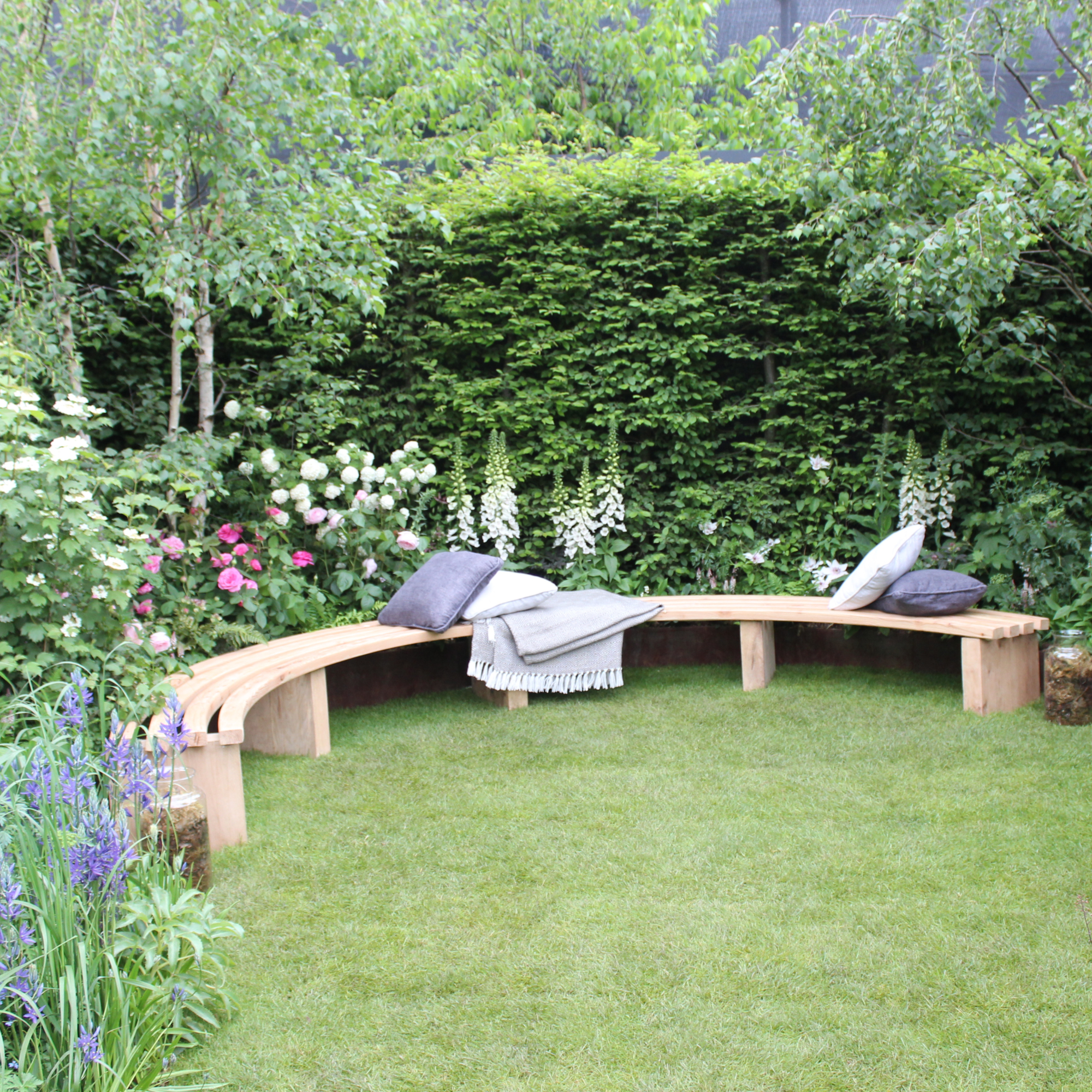
‘If you are looking for a cost-effective and low-maintenance way to cover your cottage garden in flowers over time, then look no further than self-seeding plants,’ suggests Nick from WeThrift.
Get the Ideal Home Newsletter
Sign up to our newsletter for style and decor inspiration, house makeovers, project advice and more.
After you’ve sown the seeds once, as they begin to die back they will drop more seeds, which will then bloom the following year. So, essentially, they do all the work for you, making it a great option for new or hands-off gardeners.
‘Cottage garden favourites that self-seed include poppies, geranium pratense, marigolds, and foxgloves.'
2. Install a picket or hazel stem lattice fence
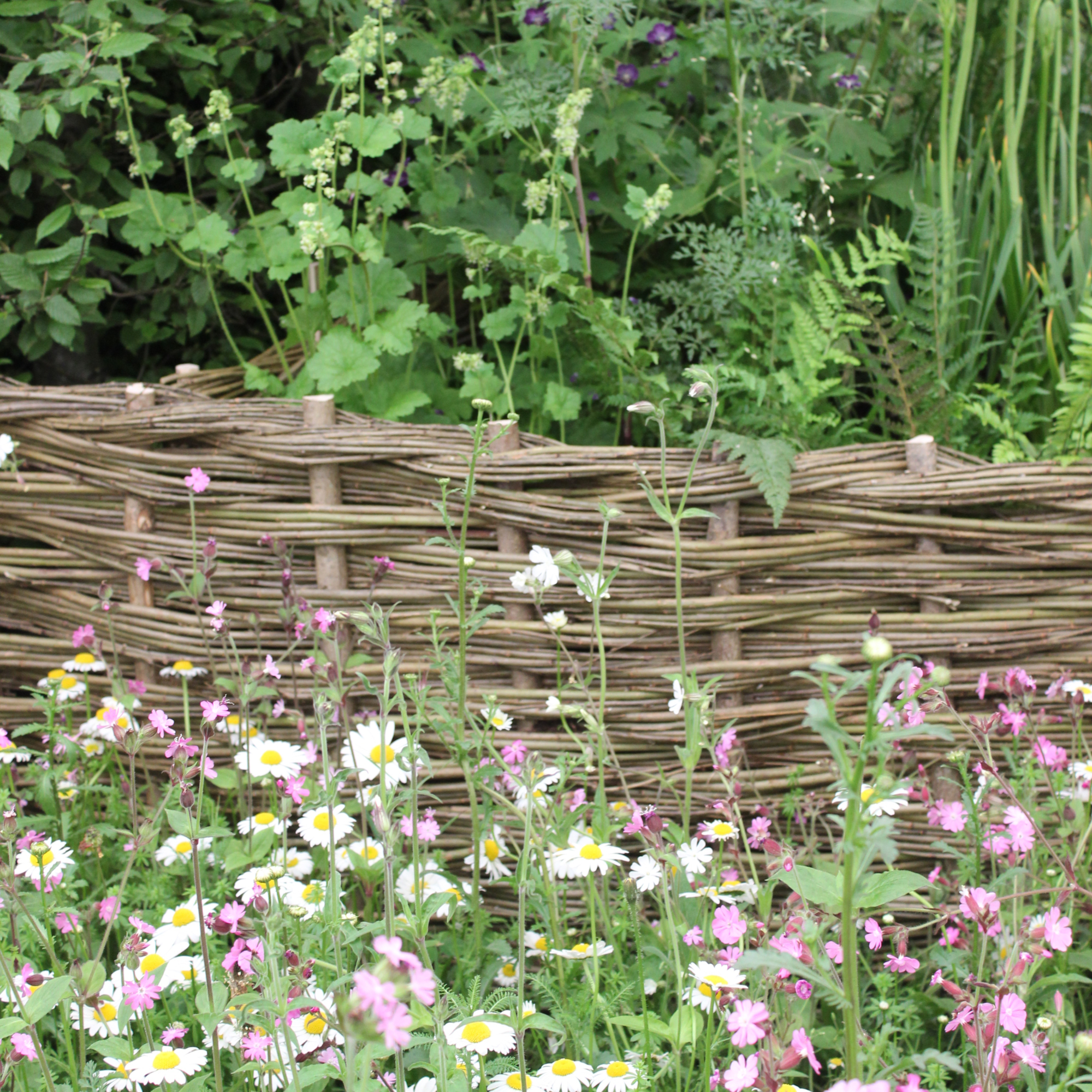
‘Picket-style fencing is a great way to section off the garden,’ recommends Georgina Read, Director at Paving Superstore. 'The style immediately leans into the cottage garden aesthetic and will border your outdoor space in the most beautiful way.
‘Alternatively, you can create a hazel stem lattice fence, which adds a higgledy-piggledy appearance that works wonderfully as a backdrop to cottage garden-style planting.'
3. Play with the paving surfaces
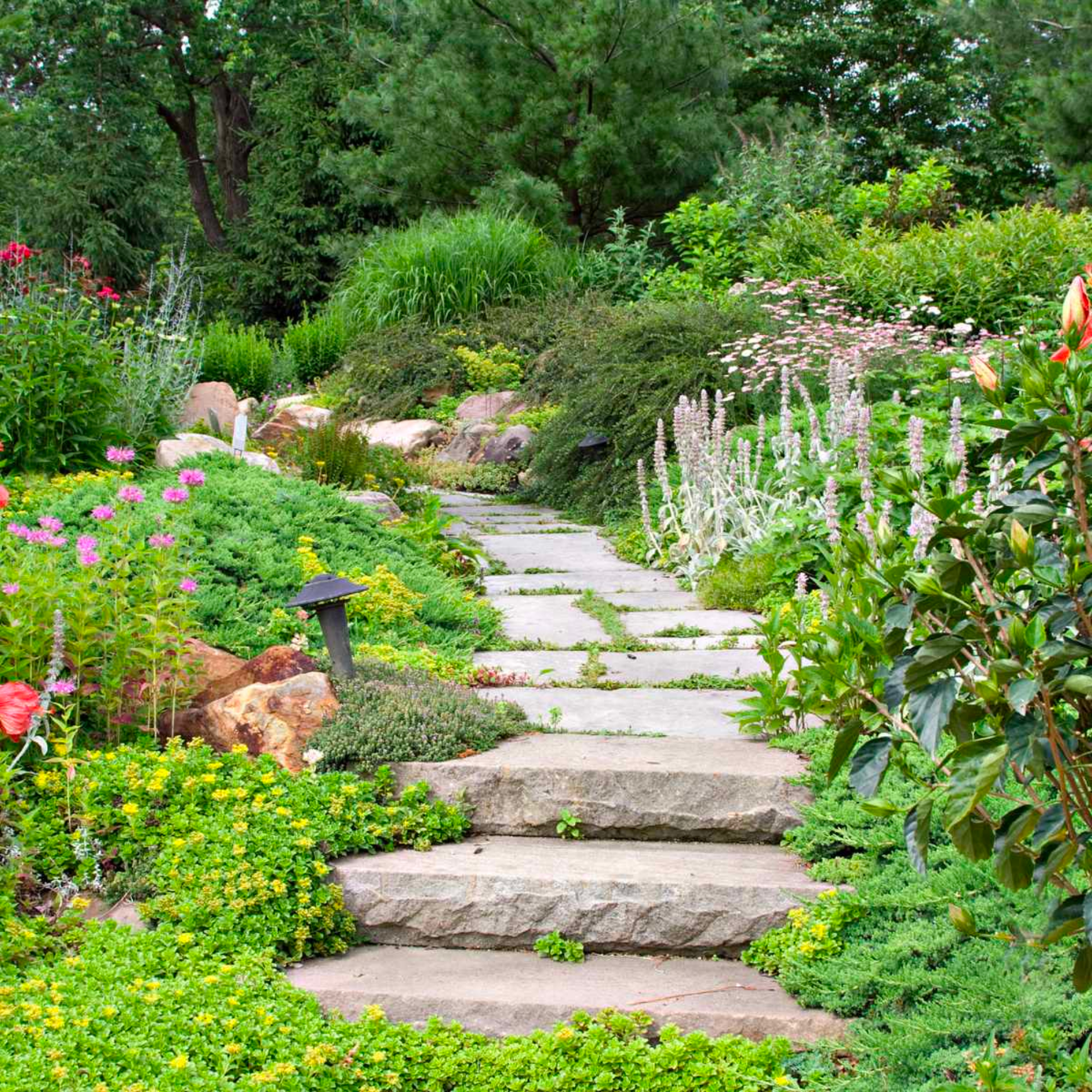
You may not have considered what a difference paving surfaces can make in your garden. But opting for specific paving can easily evoke that cottage inspired look.
‘Old-style clay bricks are a popular choice for a traditional appearance,’ Georgina affirms. ‘You can infill the gaps with sedum plants for a softer, more natural look. ‘Cobble setts also work well in a cottage garden, with occasional setts left out and infilled with house-leeks or alpine planting bedded into fine gravel.’
Brick edging or creating a scalloped edge with your paving can also be used as a finishing touch to highlight planting beds in your cottage-inspired garden.
4. Add a decorative trellis or garden arch
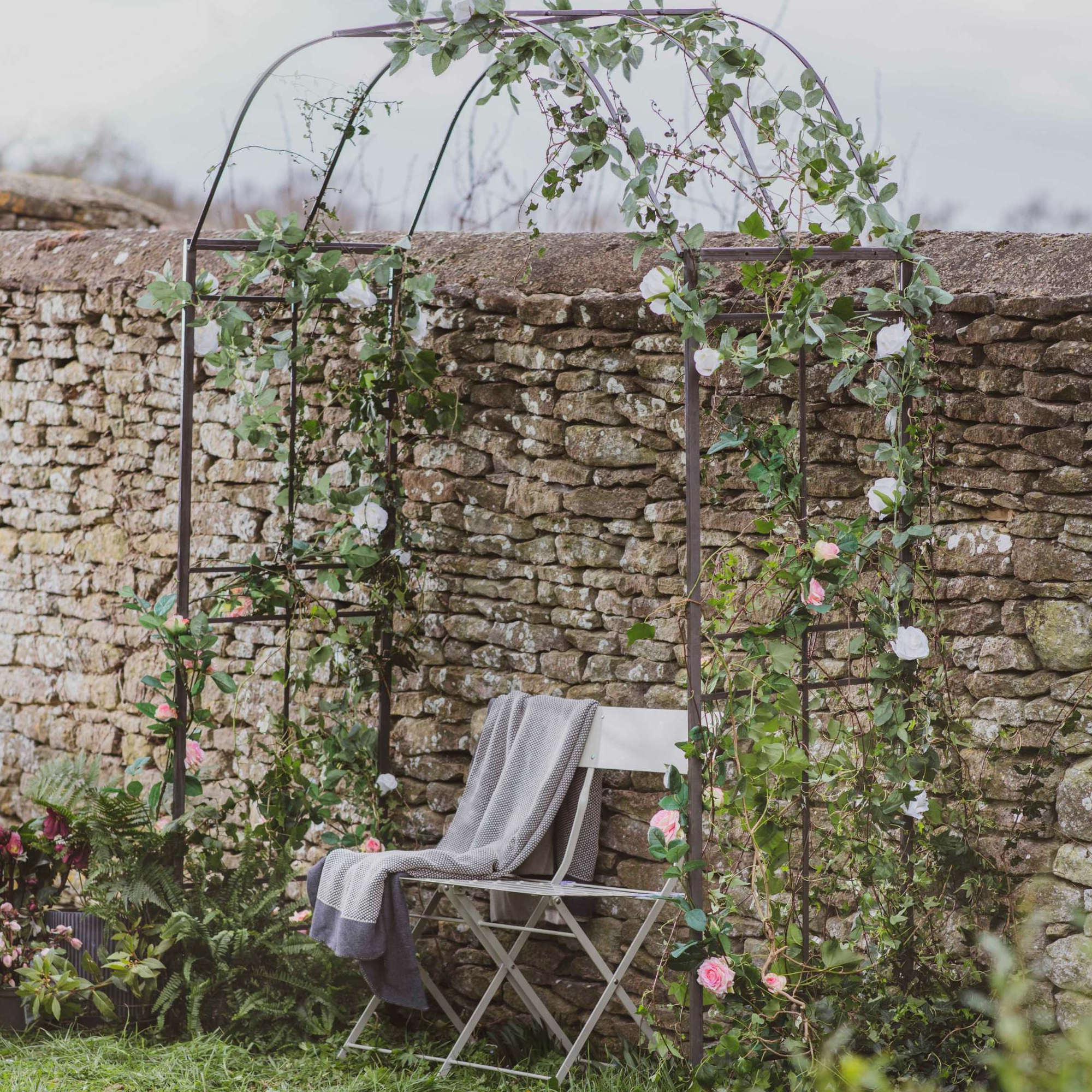
A great cost-effective way to create a cottage garden is by utilising trellis panels and screens. ‘Wooden trellises are a great way to achieve a more rustic feel,’ says trend expert Nick. ‘Add them to your walls or fences and create a decorative element by adding climbing plants and flowers to them.’
We also love the look of trellis and garden arches. If you happen to be in the fortunate position to have a sprawling garden, you can use them to break up a larger outdoor space into sections. Alternatively, if you are low on space or only have a patio area to play with, it looks just as appealing against a wall or hedge.
5. Grow plants overhead
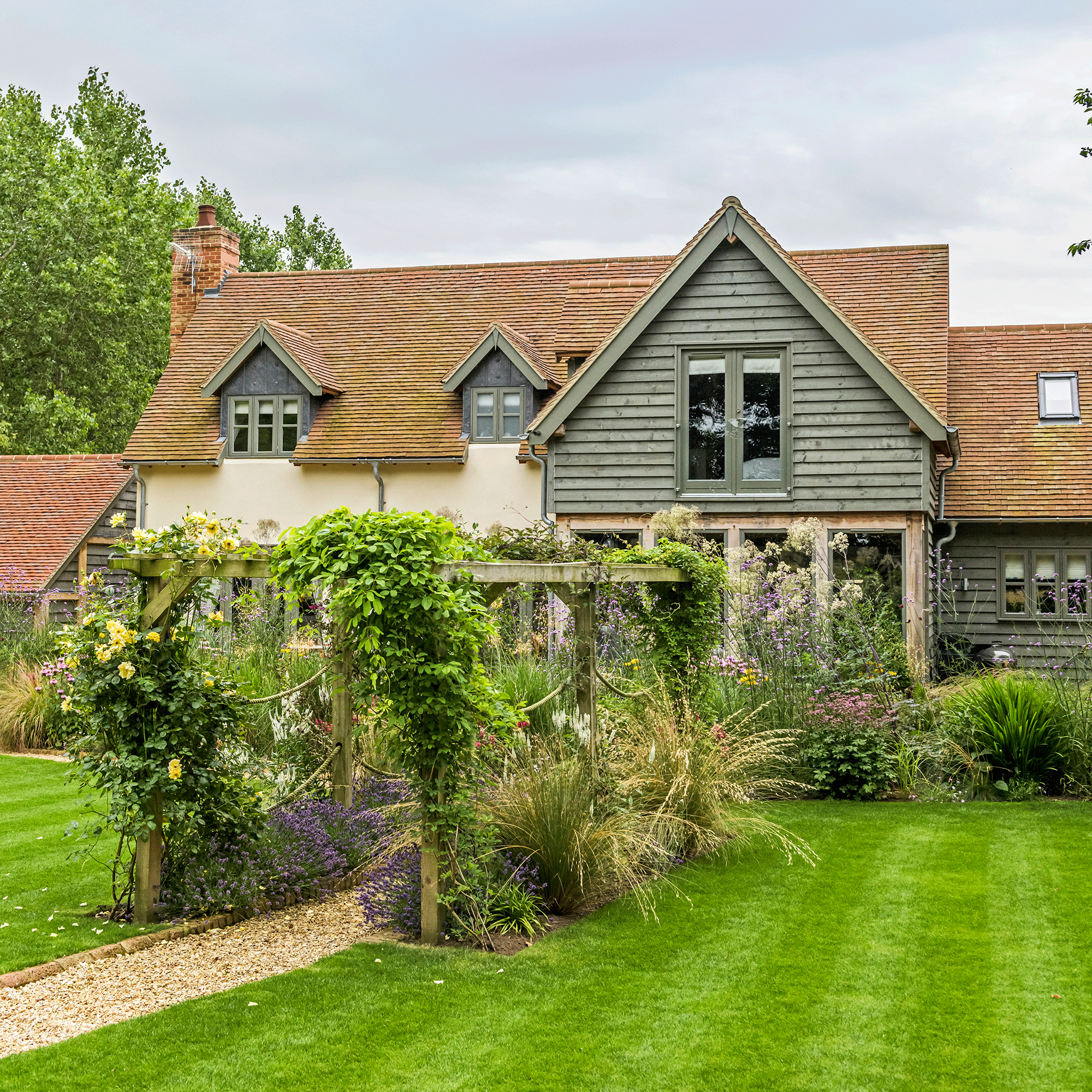
Take your garden arch or even pergola ideas to the next level by using it to grow plants overhead. This is a relatively quick way to add instant drama to your cottage garden and is actually a lot easier than you might think.
Opt for plants that love to climb, such as wisteria, roses, clematis and honeysuckle and don’t forget to weave branches and greenery in to give it that romantic look. Growing your plants overhead can also give some much-needed shade to a certain part of your garden, perfect for escaping the midday sun during the summer months.
6. Include vintage furniture
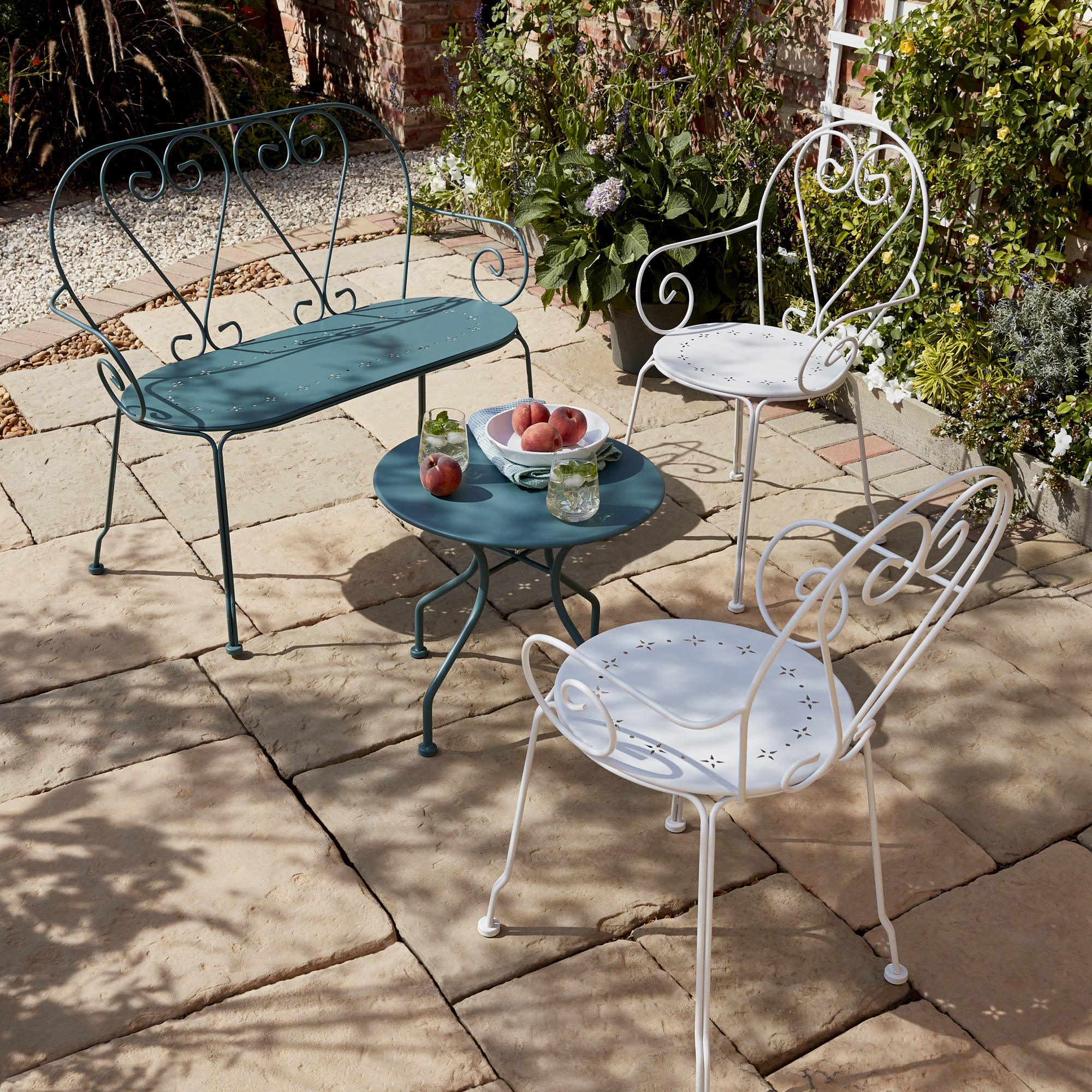
A great way to make your cottage garden distinctively yours is by buying second-hand furniture at antique shops and fairs or even on the likes of Facebook Marketplace and eBay for second-hand items. Not only will the pieces be much more unique, compared to buying from your local garden centre but they will also have that vintage look that works so well in a cottage garden.
The best garden furniture to look for are chairs, an outdoor table or even a feature workstation, which you can use to display plant pots, with a rustic or weathered charm to them, as these will really complement the cottage garden aesthetic. If you don’t have any luck shopping this way, look for ornate pieces or ones made from natural materials when you buy new.
7. Cover your home with wisteria
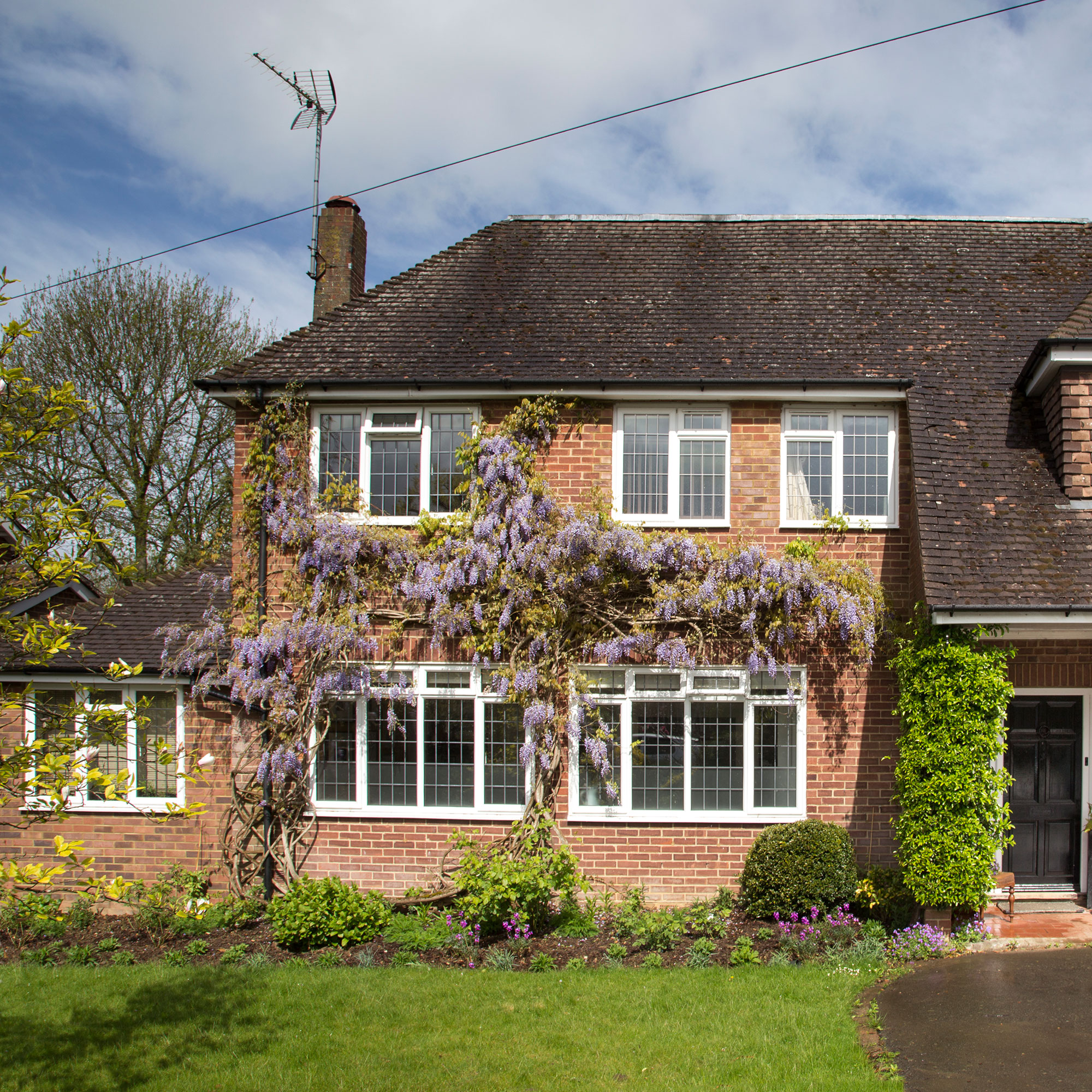
Add fragrance and colour to your home by encouraging wisteria to climb over the facade. The pretty blossoms will bloom in May and June, offering a swathe of delicate purple flowers.
The vines grow in a winding, twisting pattern, offering that relaxed feel that speaks to cottage garden ideas, meaning even the bare branches will still add interest.
8. Upcycle farmyard items
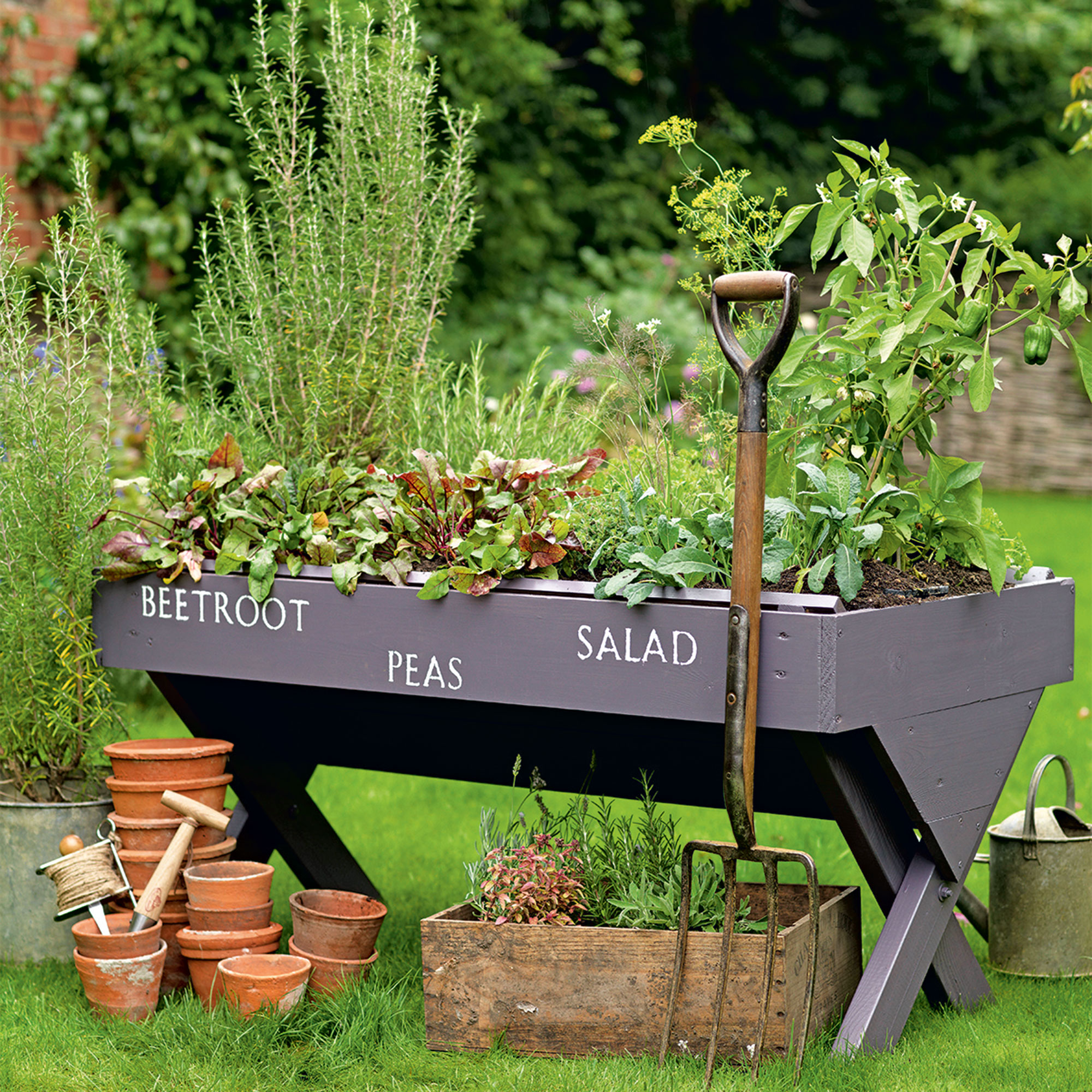
Take literal inspiration from the countryside by finding and upcycling old farmyard items. Water troughs on legs make excellent potting area or miniature herb gardens, which will fit in even the most petite of gardens.
Low to the ground cattle troughs can be used as individual flowers beds, or to form a flowering border. Galvanised metal milk churns are also practically tailor made for turning into pretty planters. When choosing what to use, think of what a cottage owner may have inherited from the previous owner or farmer next door would have given away.
9. Create a wild border
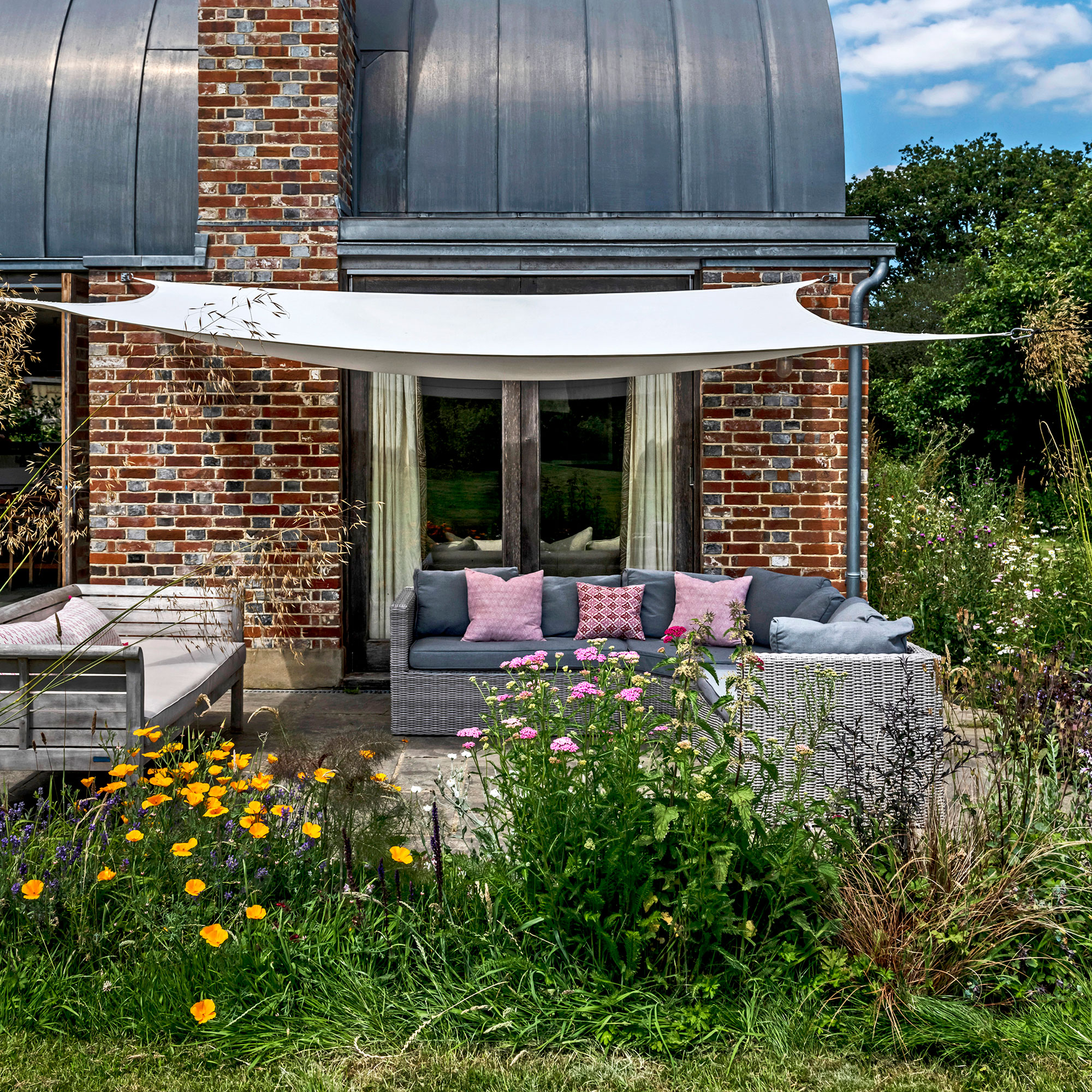
The relaxed and wild style of cottage garden ideas works beautifully in large grassy fields, but smaller gardens can benefit from this planting style, too. If you're looking for small garden ideas or you simply want to add interest or delineate between garden zones, a flower bed can form a natural border.
Plant varying heights, colours and textures to achieve that wildflower feel. Make sure to include some herbs or lavender to ensure a delightful fragrance.
10.Utilise every area
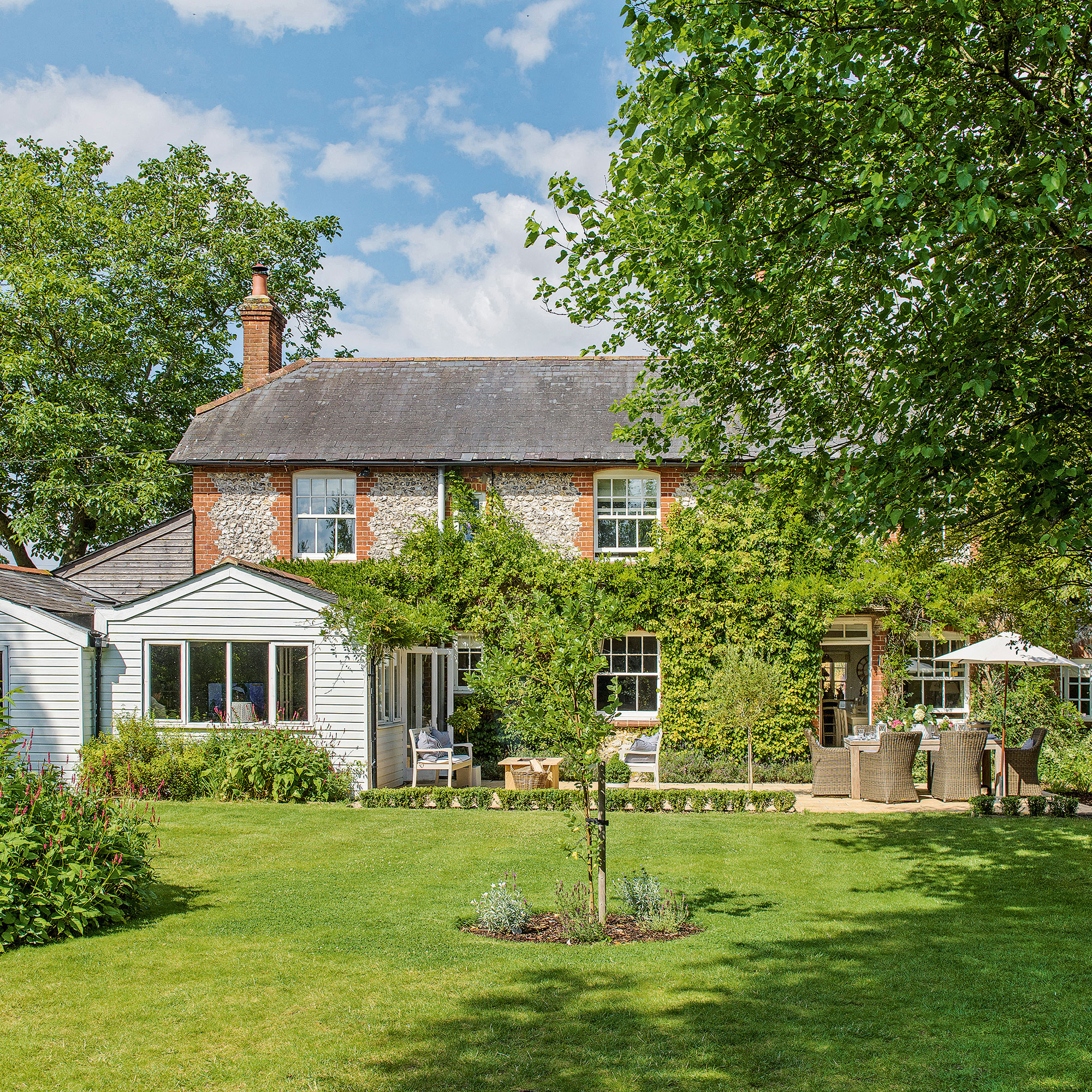
Country style gardens are often abundant, featuring new planting and surprises at every turn. View every available area as an opportunity to add depth, colour or texture. Start with the lawn and add in borders, flower beds and even statement trees and shrubbery in the centre. Cover the exterior of the home with climbers and window boxed and load up any patio space with potted plants.
11. Add in raised beds
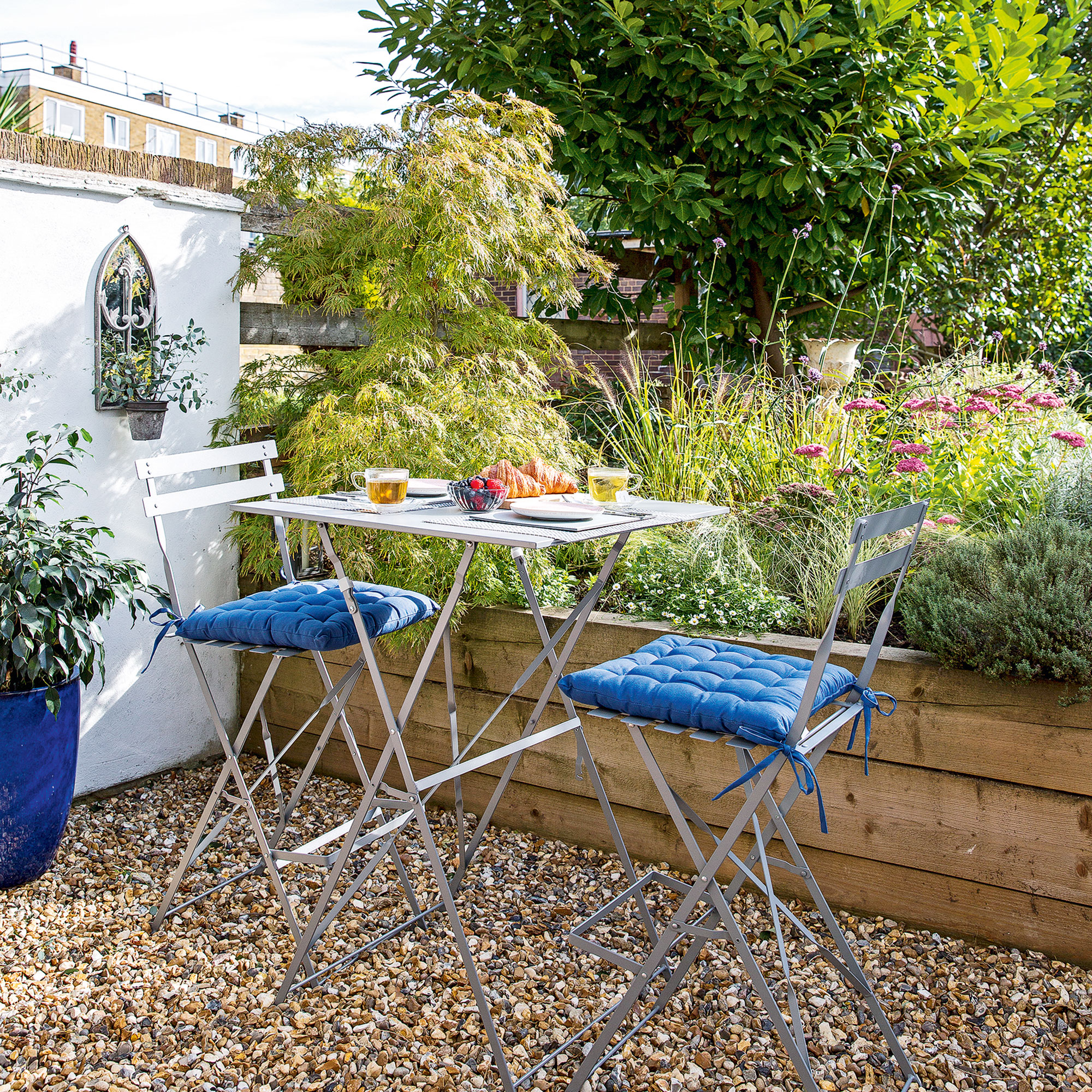
An excellent way to include wildflowers in small spaces is to limit them to raised beds. Make this work in an urban location by choosing a bed make from natural woods and then layer up various plants, flowers and grasses.
Be aware that they will bloom at different times, and grow out and well as up, so start with fewer and add in more once you've seen the bed through a season.
Raised wildflower beds are also great in larger gardens, especially situated near vegetable plots to encourage pollinators.
12. Include a summerhouse
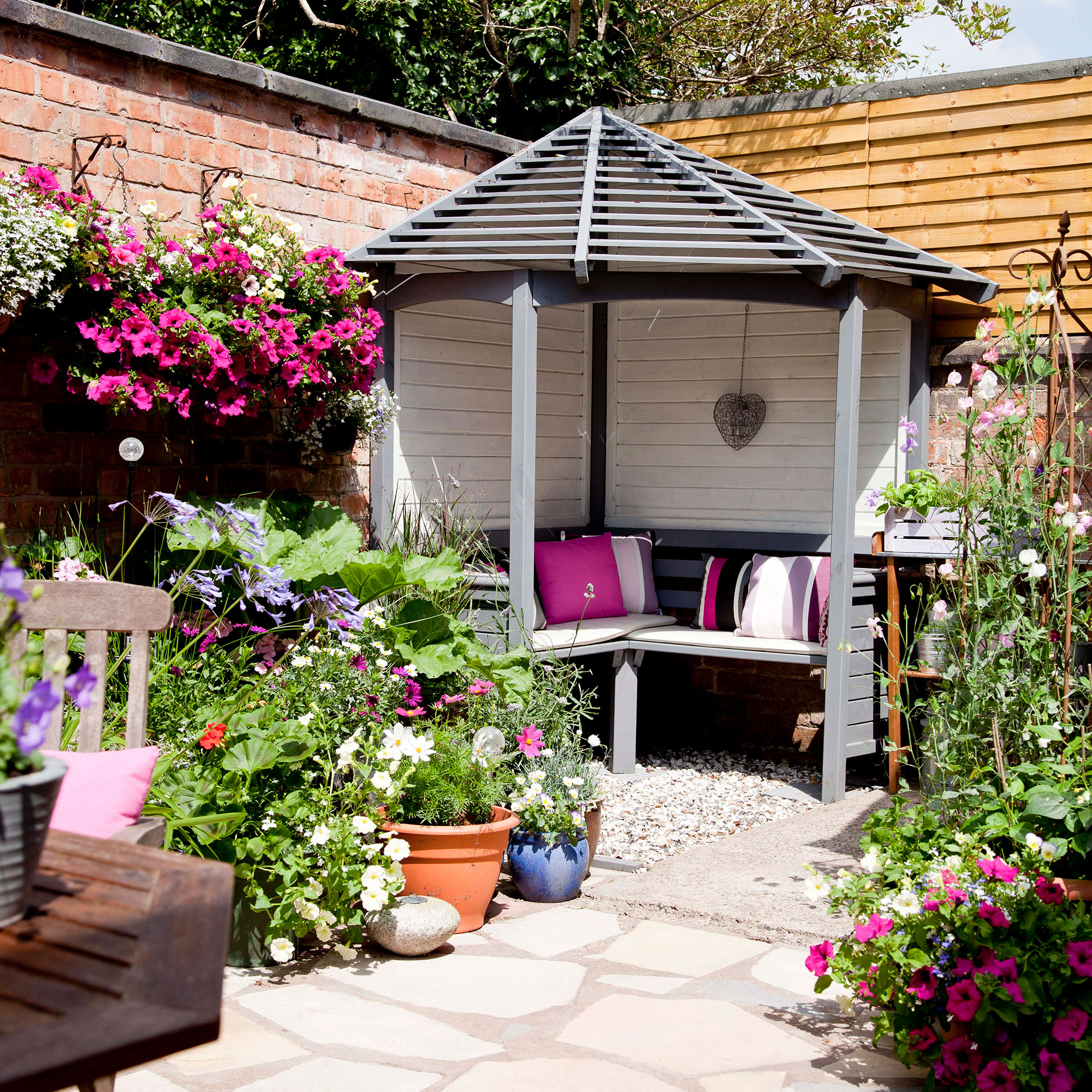
You'll want somewhere in your outdoor space to admire all your hard work. Or simply to sit and enjoy a G&T at the end of a long summer's day. Traditional summer house ideas can perfectly reflect the cottage garden vibe.
Stick to woods for that natural touch, but feel free to paint in pretty colours to either help the structure blend in or to pick up on the shades of your favourite flowers.
13. Look to natural materials
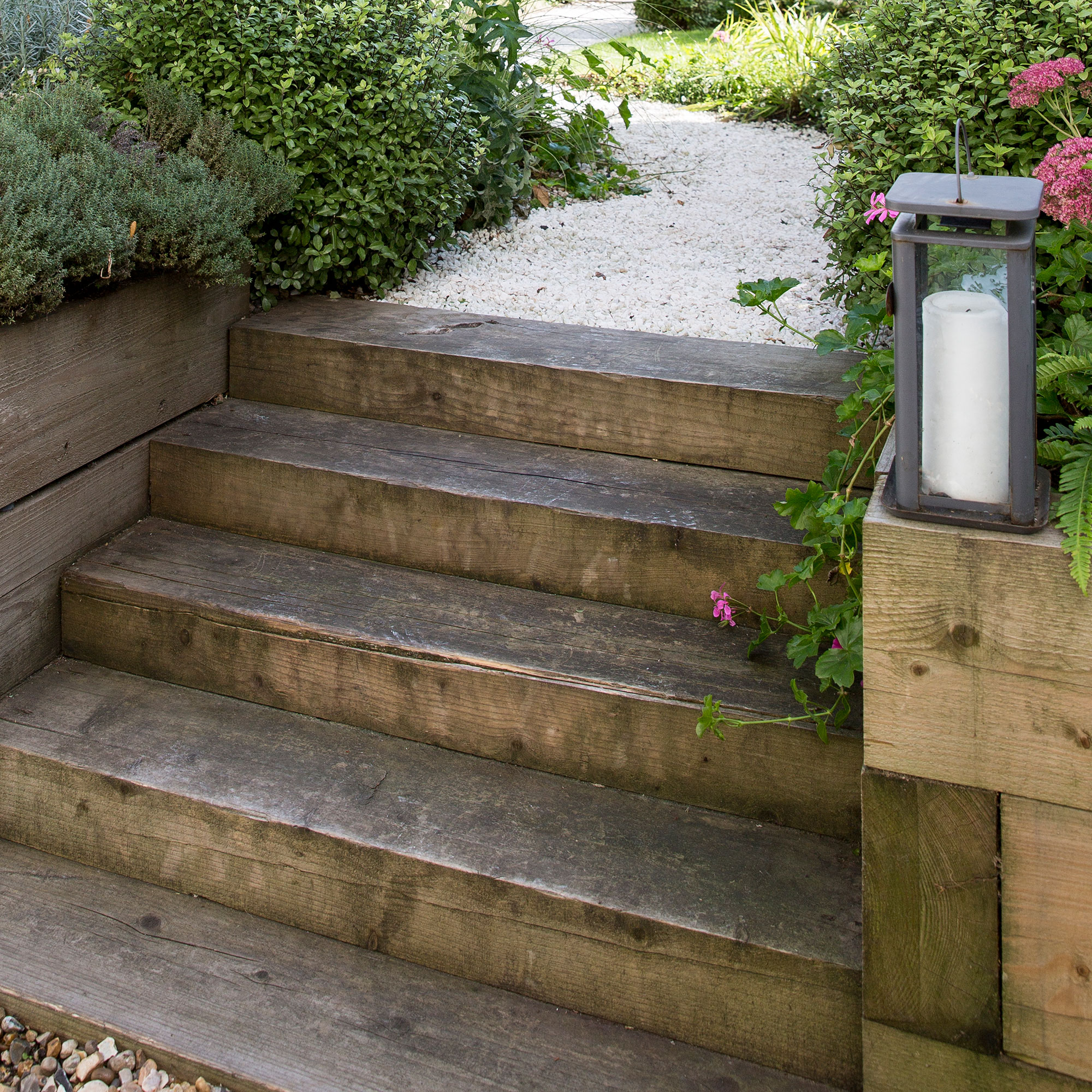
No rural inspired garden would be complete without using plenty of natural materials. Wherever possible, replace more contemporary surfaces with rustic options. This could include wooden steps, using railway sleepers as garden borders or changing sleek stone areas with pebbles.
14. Grow relaxed styles of plants and trees
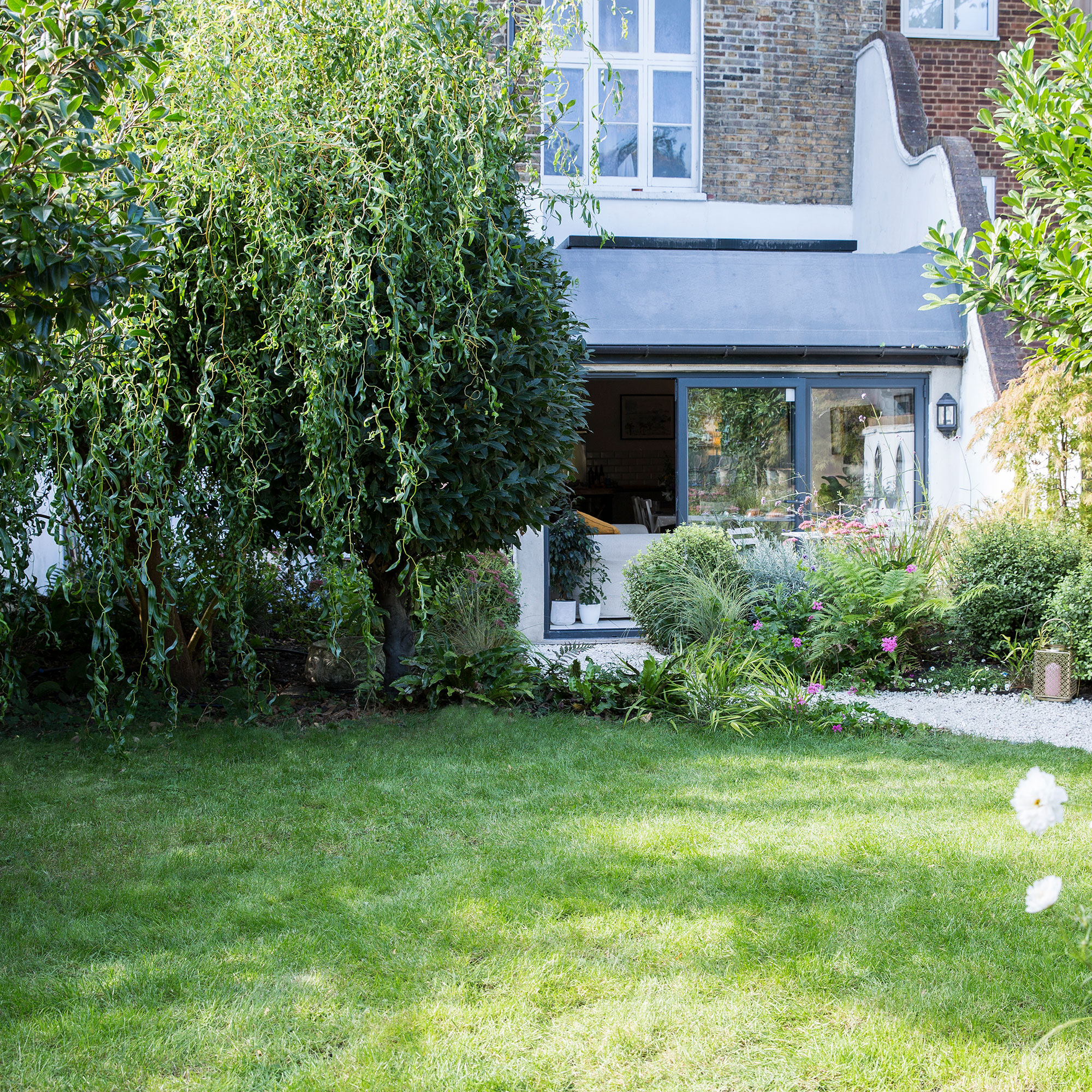
Take the relaxed style further than just how and where you plant. Make sure you consider this in what you plant as well. Romantic, draping choices such as willow trees add that whimsical feel of cottage garden ideas, while ferns and long grasses offer the wild aspect seen in rural forests and meadows.
15. Create a colour scheme
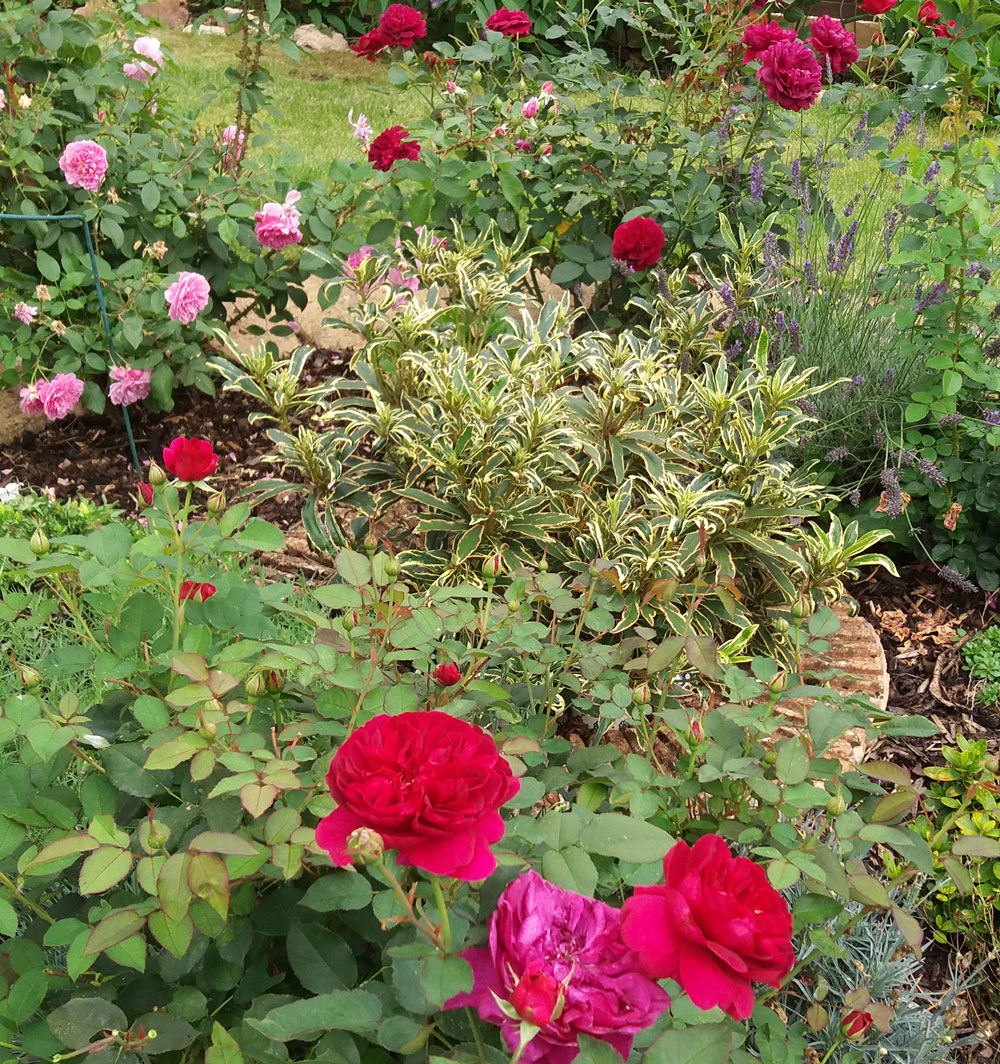
‘Pick a colour scheme, a warm or cool palette can help to give the garden definition’ advises Phoebe Aubury at Natural Design Studio. ‘Limiting the amount of colours and using colour theory such as complimentary colours can help to avoid clashing and keep it looking harmonious rather than messy.’
16. Grow foxgloves

'With their spires of bell-shaped flowers much loved by bees, foxgloves are a cottage garden favourite' explains Marcus, Horticultural Director at Dobbies. 'Available in creams, pinks and lavenders, they help brighten shady spots and are great planted with Hostas and Ferns.'
These purposeful blooms can be grown in any sized garden plot, even in containers on a small balcony.
17. Let grasses grow
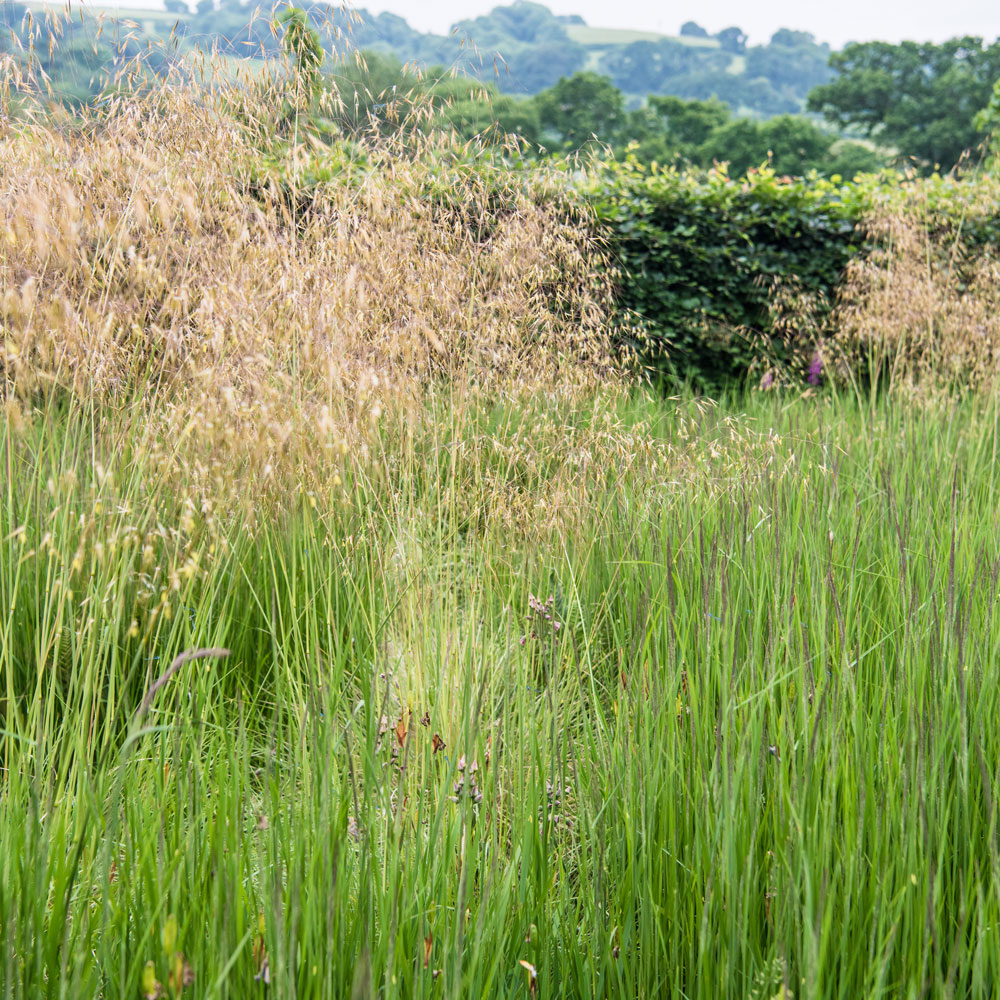
Mowing the lawn is no longer in favour – leave grasses and those with seed heads uncut to help support wildlife.
'If you only do one thing this year to improve your garden’s value for nature, be more like Monty and cut your grass less, or not at all,' says Sarah Mead, creator of the Yeo Valley Organic Garden in Somerset.
Sarah continues, 'Global biodiversity is in decline and our climate is warming. It’s essential that we all recognise the small changes we can make that have a huge collective impact on our environment. Putting your feet up instead of getting the mower out is top of the list!'
18. Grow a wildflower meadow
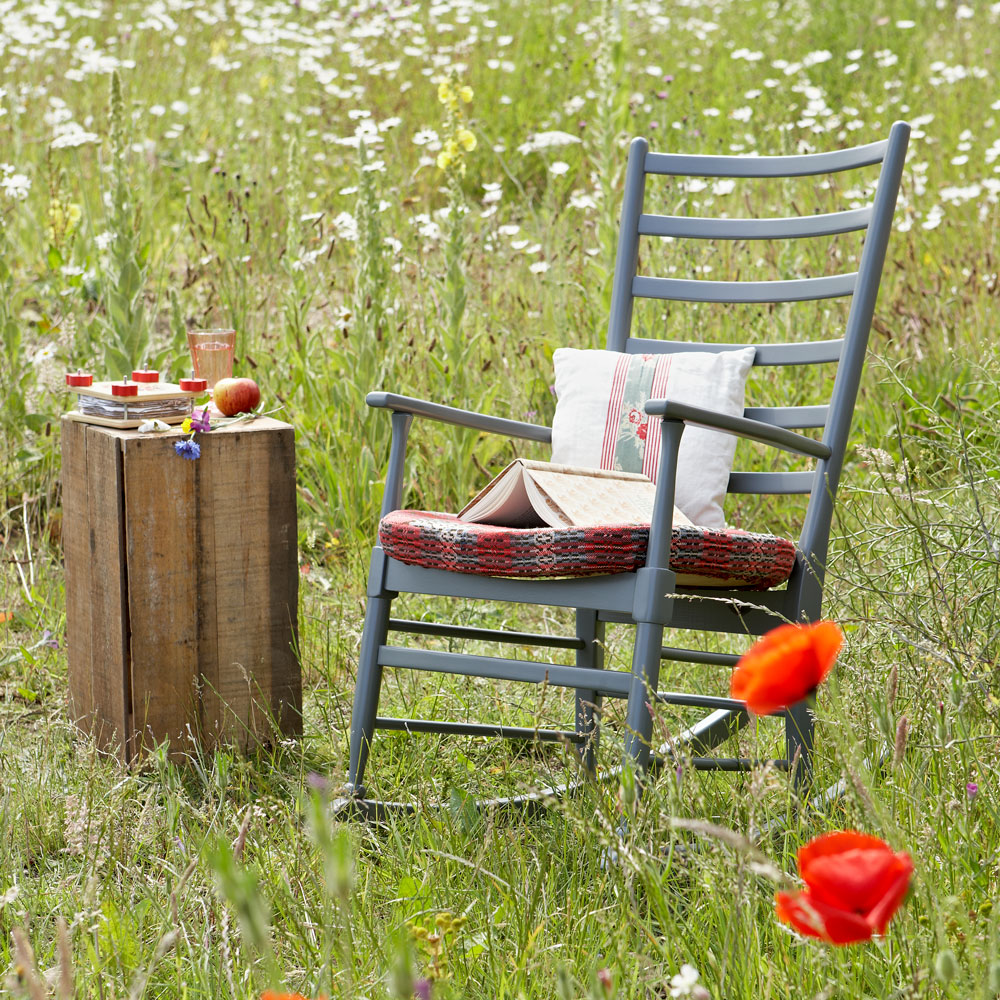
'Where a cottage is set in a beautiful countryside location, it can be an opportunity to create a space which reflects this backdrop,' explains James Scott, of The Garden Company.
'A wildflower meadow is a great way to achieve this, even if there is just space for a miniature version. Meadows do take perseverance and several years to establish; however, once achieved they are relatively low maintenance and require just 1 cut per year.'
19. Welcome wildlife
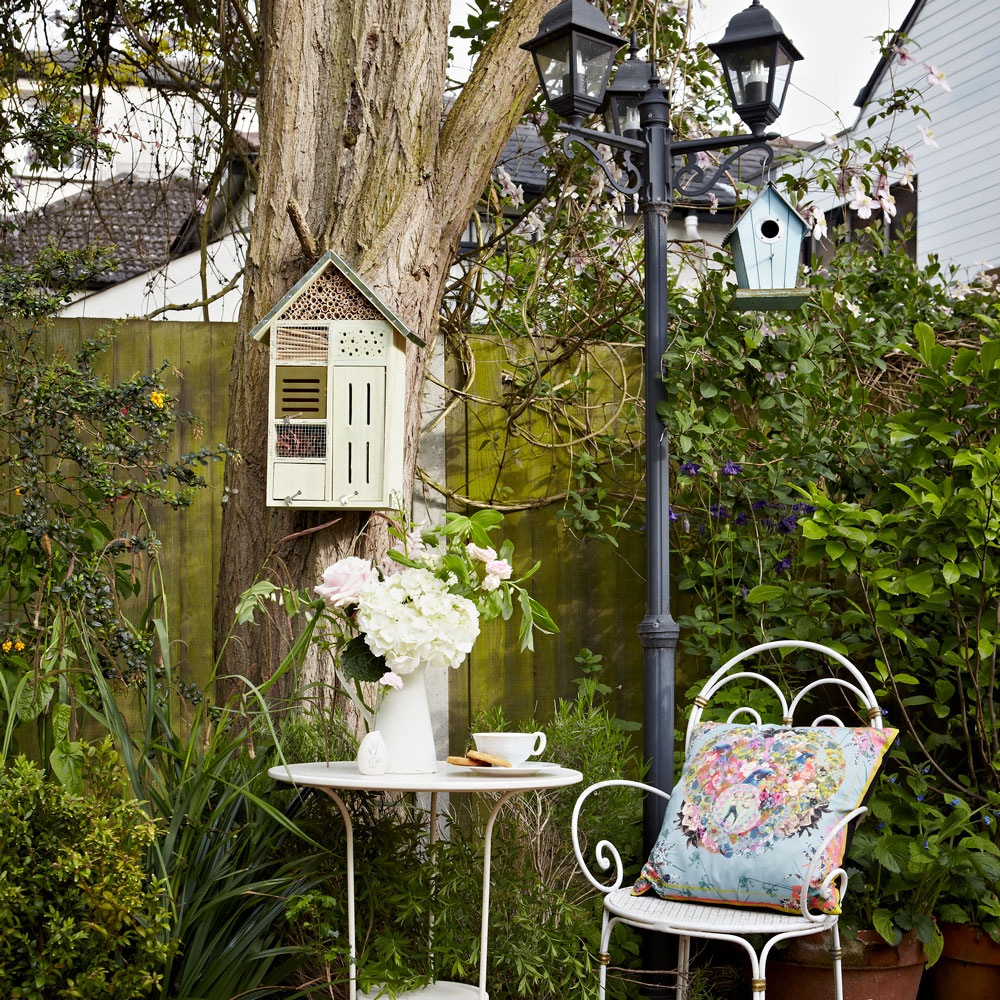
Cottage gardens are ideal for attracting wildlife. Aside from the planting you can encourage wildlife to take up refuge in your garden with the simple addition of bird boxes and insect houses.
Not only are they welcoming for wildlife they help to add a charming decorative touch to the garden decor too.
20. Encourage rambling roses
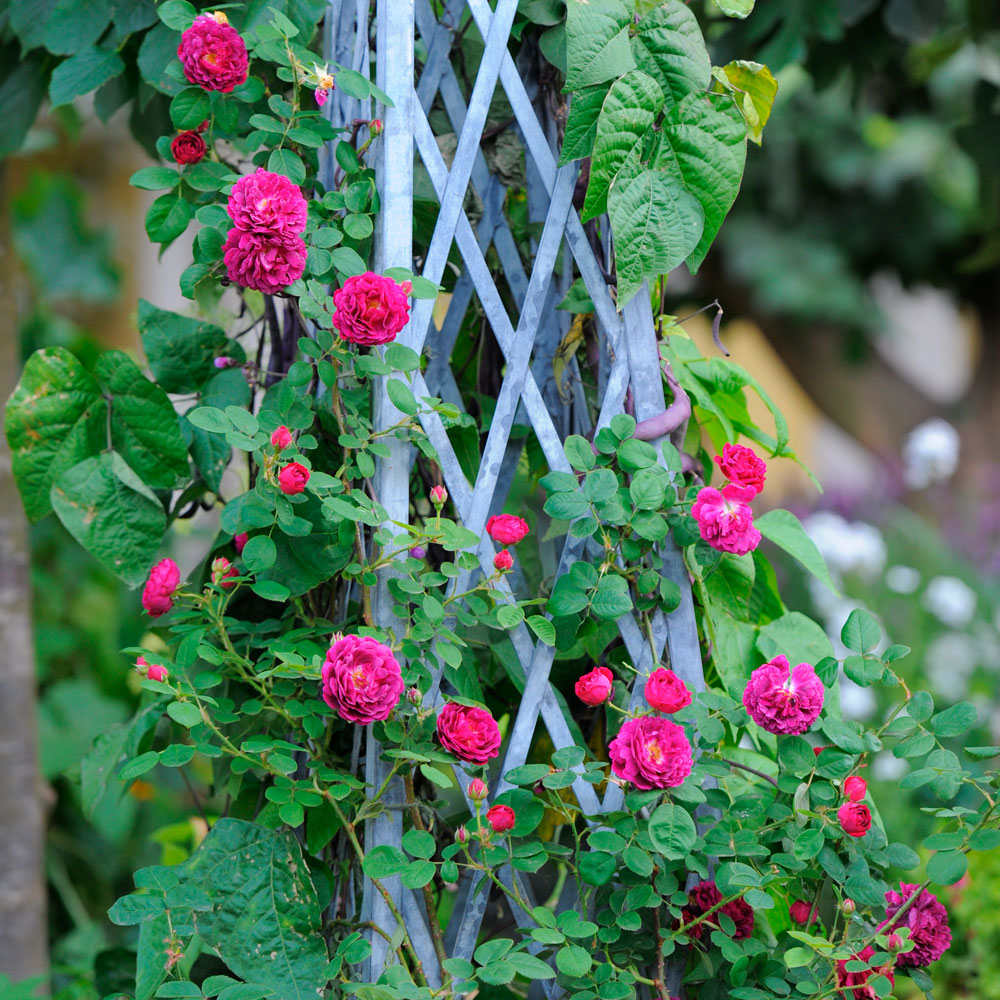
More vigorous than climbing roses, rambling roses grow in a more wild, untidy fashion, and will happily develop into a larger bush, hedge or tree. Climbing roses have a permanent framework of stems that produce flowering side shoots each year. To promote greater flowering, the framework stems should be trained by tying them to wire supports as close to horizontal as possible.
Roses are divided into categories according to their growing and flowering habits. The main groups are large-flowered bush roses (hybrid teas), cluster-flowered bush roses (floribundas), shrub roses, climbers and ramblers.
21. Respond to the setting
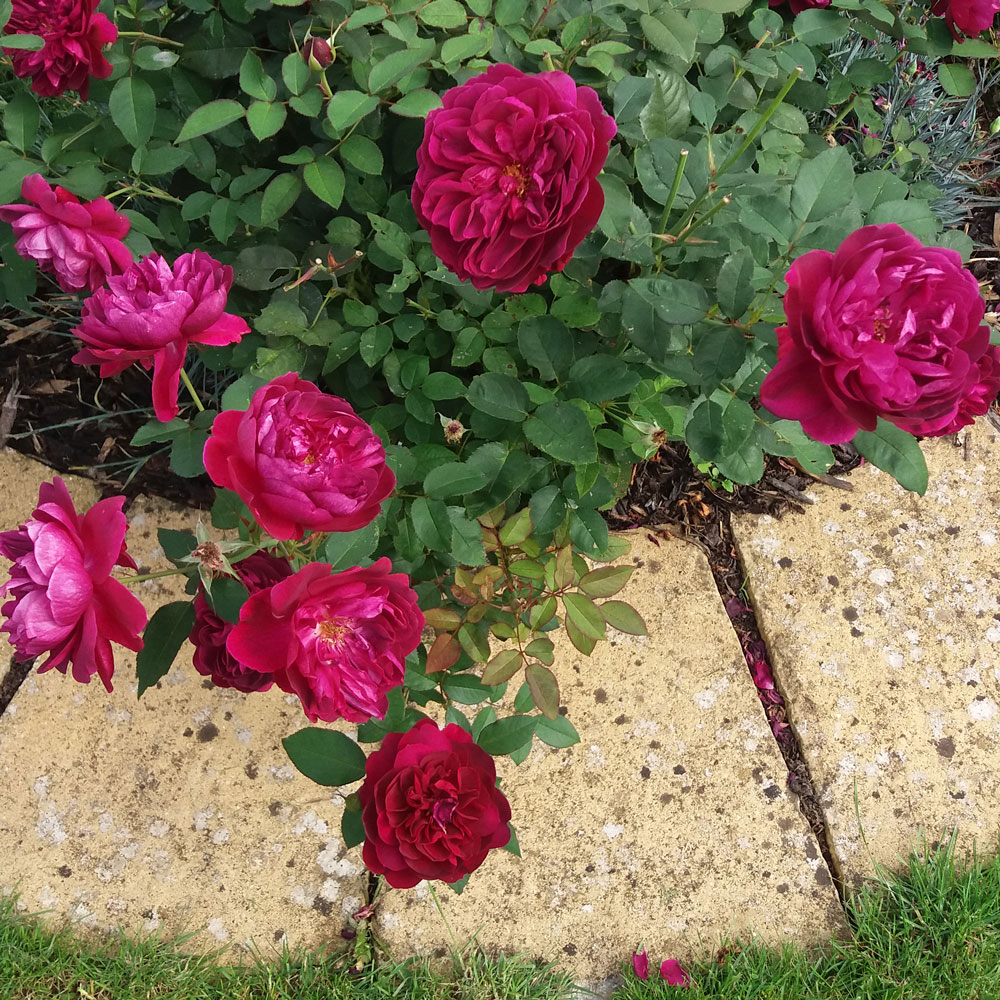
'Look for inspiration in the surroundings of the garden' advises Phoebe from Natural Design Studio. 'The landscape around the garden will give you plenty of clues as to which materials are best suited to the setting. Using the local stone or brick type can help to tie a garden into its setting.'
22. Consider your hedges and perennials
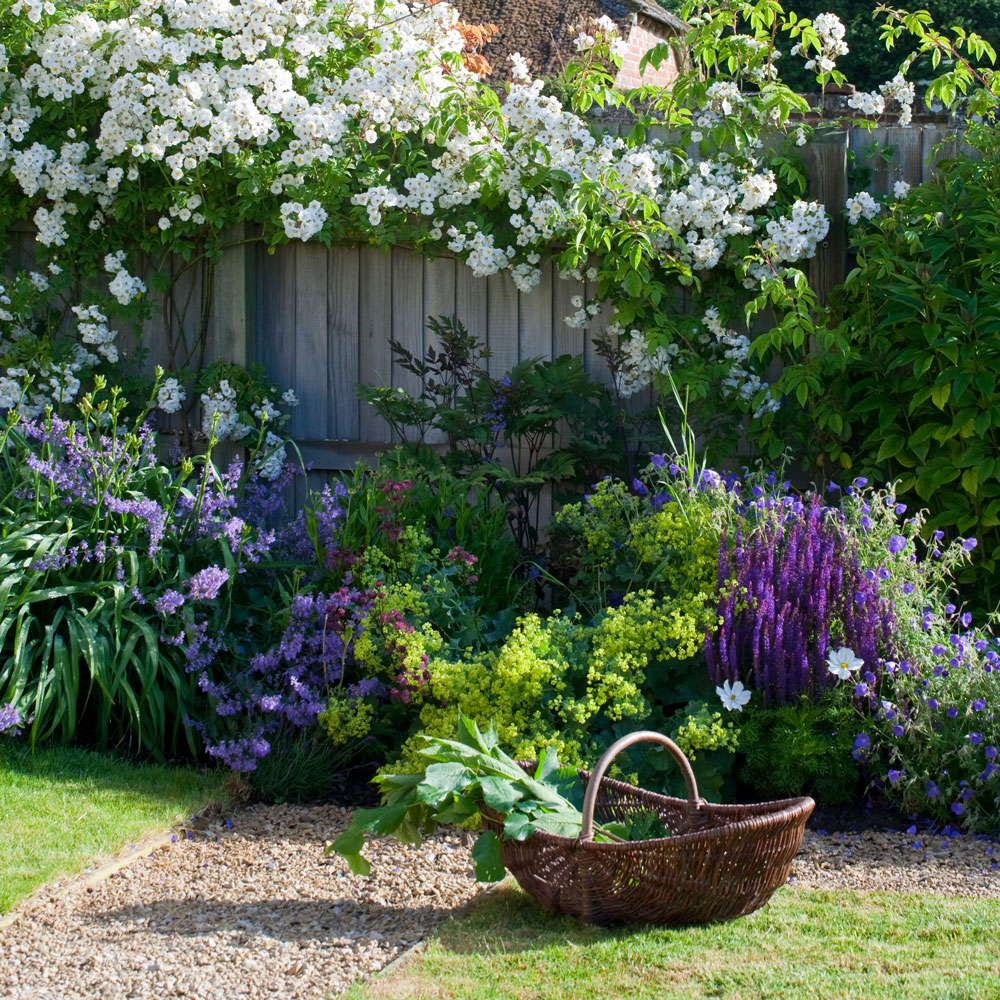
For a classic cottage garden feel chose planting that will deliver. Select classic evergreens such as cypress, holly, box, copper beech or yew. Opt for classic perennials such as foxgloves, bellflowers, daylilies, delphinium and lavender – these will all offer a nice foliage in combination with roses.
23. Set the scene with stone walls
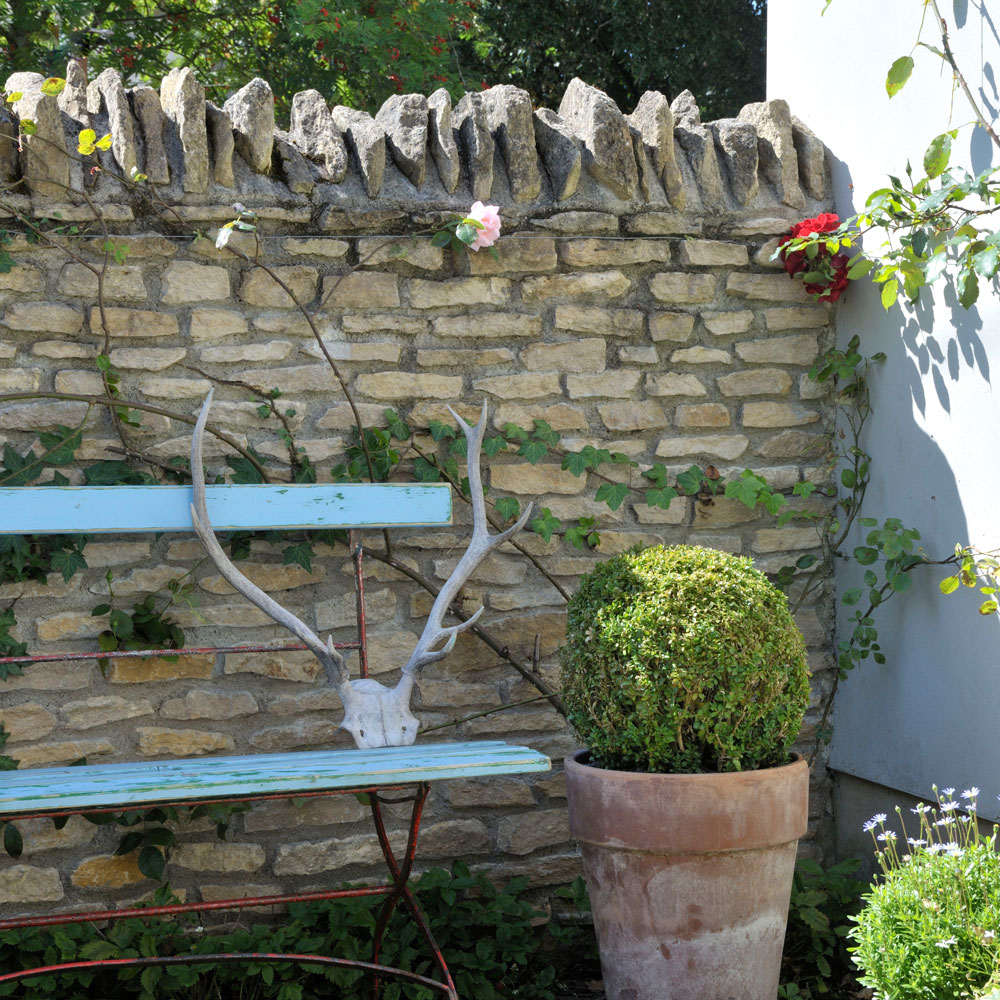
Choose hard landscaping that feels authentic to a rural countryside garden, by taking inspiration from Cotswold stone walls. Accentuate the cottage garden feel by growing vines, red roses, and topiary plants. Add a rustic garden bench made of wood or metal to further enhance the cottage-style vibes.
24. Lay winding pathways
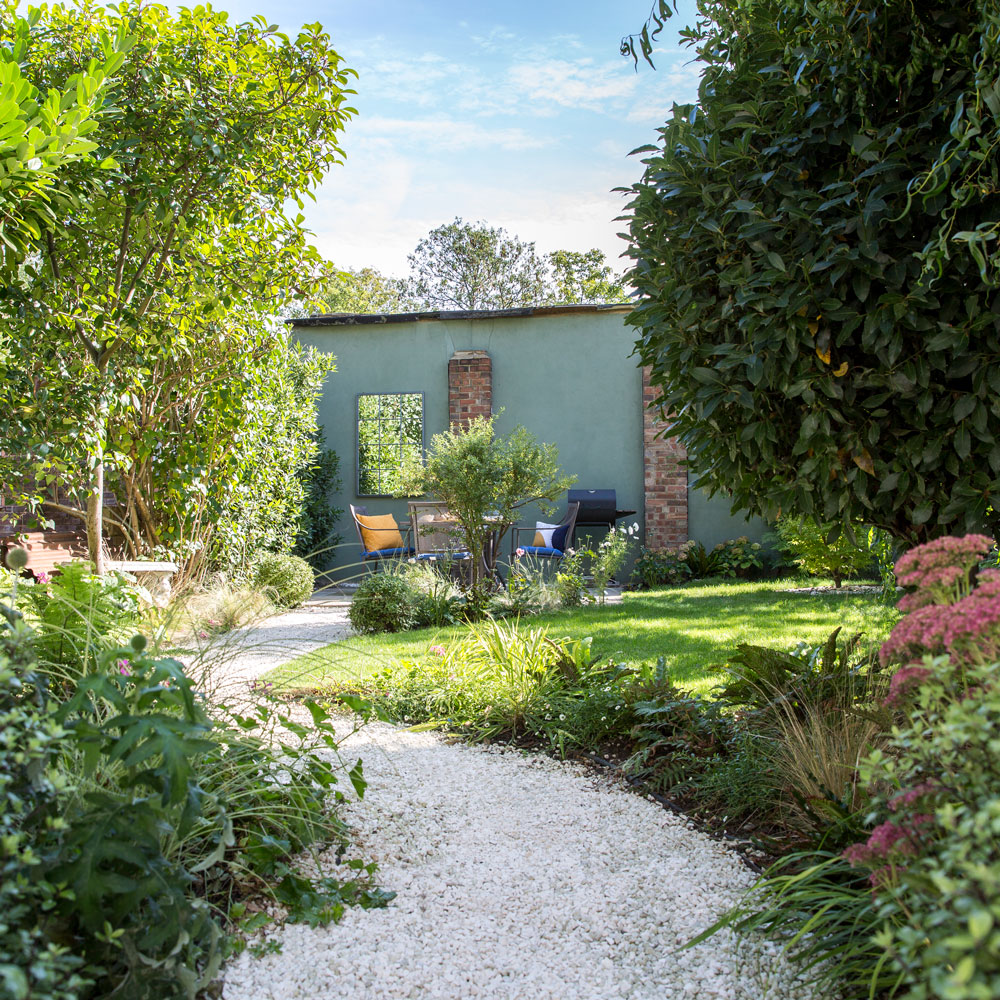
A key design element for cottage gardens is the freedom of form; the layout is encouraged to be less structured and strict than a perfectly manicured, contemporary garden design.
A gravel path that gentle winds its way within the garden helps to keep the look light and unrestrictive. Draw up plans to decide on where to place your paths, as well as the materials that you will use to construct them, factoring in your budget for garden landscaping costs. Allow each square to represent a foot of space.
25. Appeal to the senses with aromatic planting
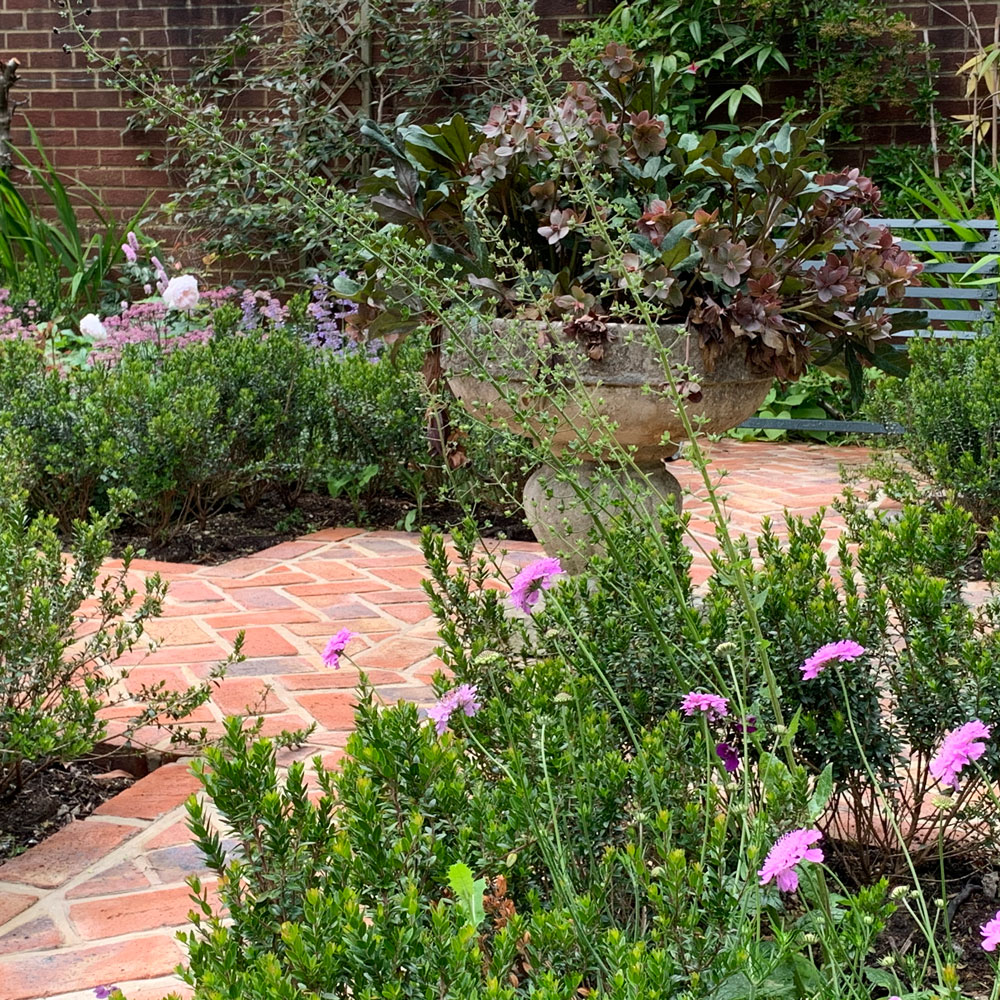
This thoughtful garden design has created a romantic, traditional cottage garden which feels as if it has been there for years.
'Rather than using traditional box hedging I specified Myrtus 'Tarentina',' says garden designer Nina Baxter. 'The garden is very sheltered and doesn't suffer from hard frosts so I knew this would be ok through the winter. I love the aromatic foliage and it clips beautifully into low hedging. This was infilled with roses and perennials for an exuberant cottage garden feel.'
26. Create secluded retreats
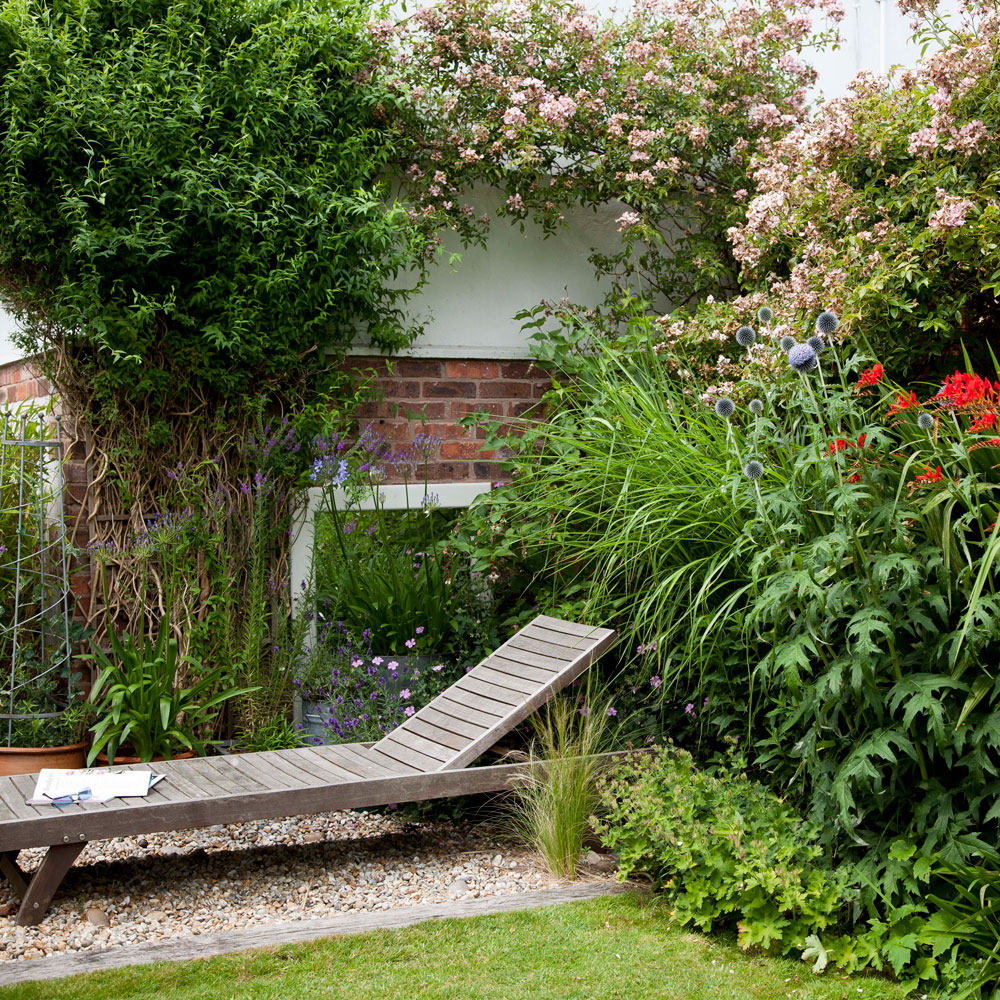
A beautiful cottage garden can help you to relax and unwind. 'I like to create intimate havens with seating where people can feel completely immersed in the life of the garden,' says James from The Garden Company.
'These spaces can often be created with informal planting and I like using plants that will attract bees and butterflies, enhancing the feeling of having escaped from city or town life to the countryside.'
27. Incorporate structural planting
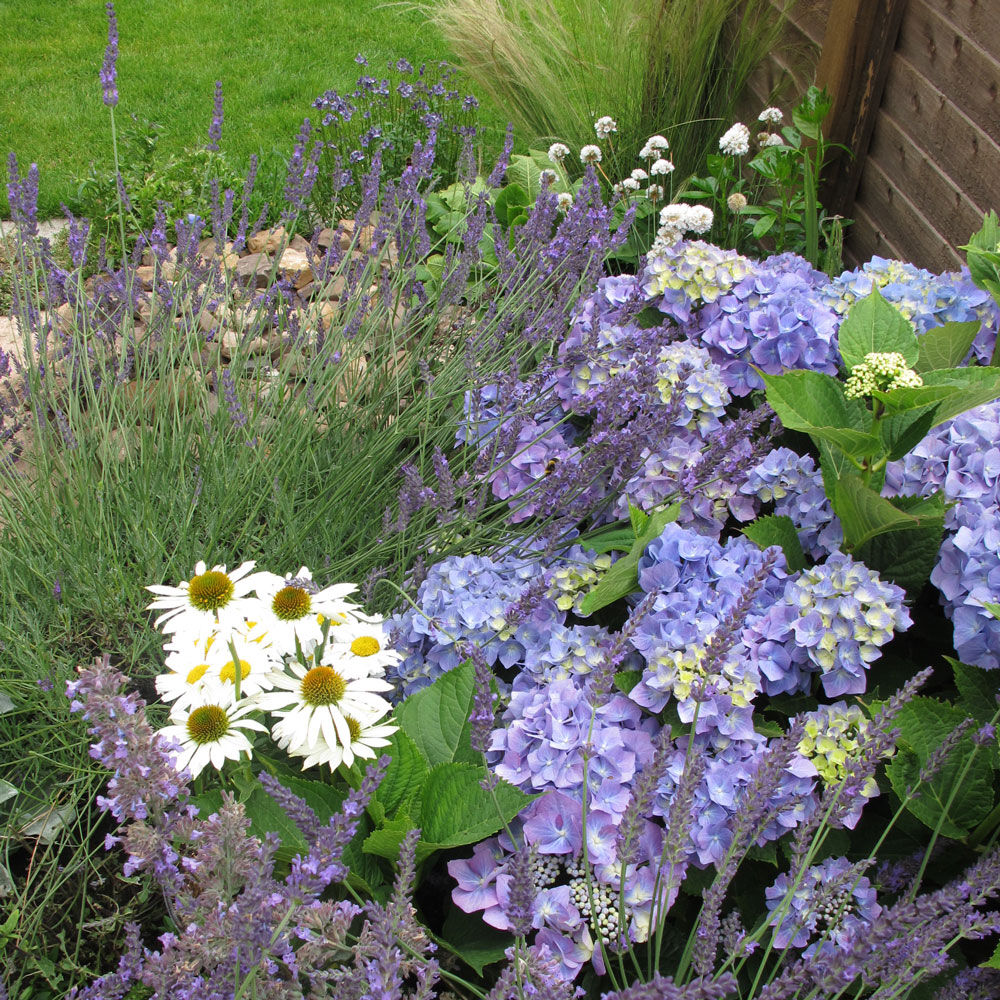
'Use loose, atmospheric planting but don't forget structure!' exclaims Phoebe at Natural Design Studio.
'Loose grasses and various textured perennials will help to create a natural, relaxed cottage feel, but remember to include evergreen shrubs that will give the garden shape and structure when all the herbaceous plants die back in the winter.'
28. Champion rustic materials

Fill the garden with natural textures and materials to welcome a rural feel to your gardening scheme. Explore garden discount codes to pick up a mixture of accessories from willow screening to wicker baskets for planting, weave in plenty of country-style materials to accentuate the aesthetic of classic cottage decor.
With all natural woven material ensure they are treated to withstand the elements, place them in more sheltered spots within the garden to preserve them further.
29. Grow your own
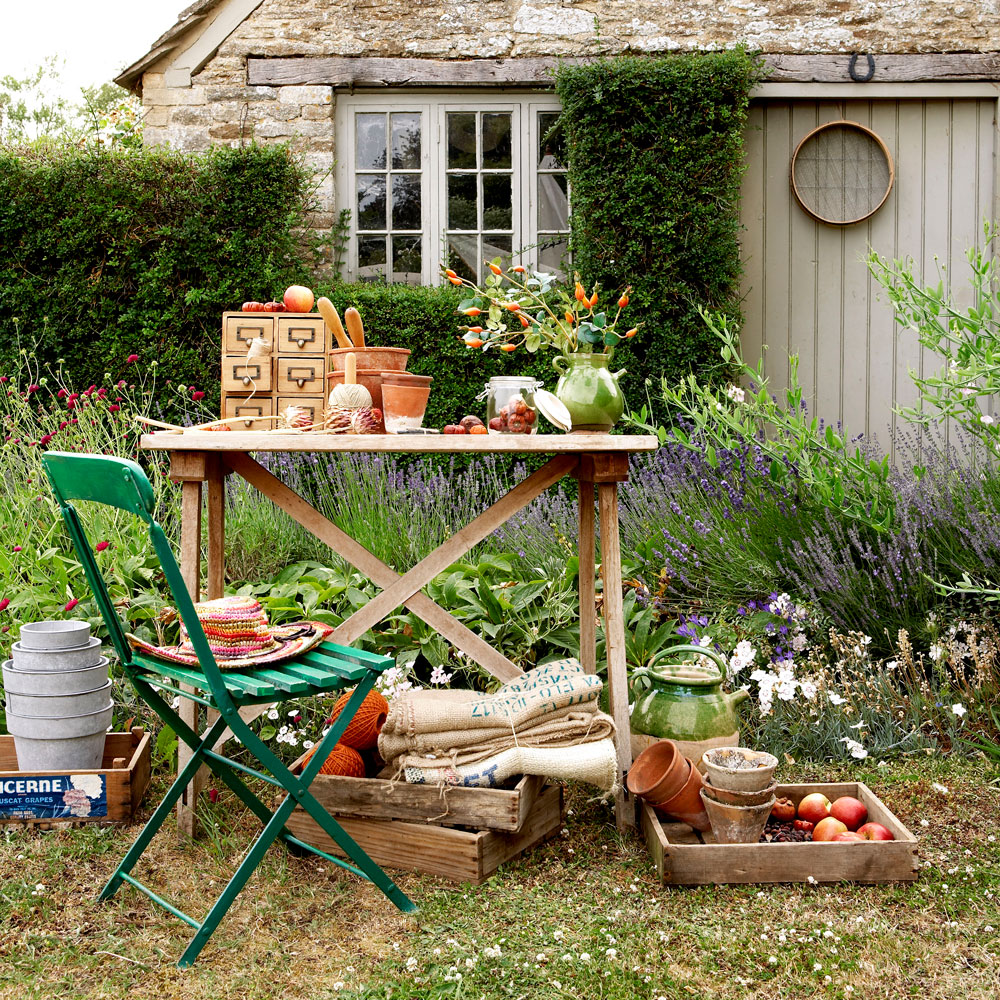
Traditionally cottage gardens were highly practical with an emphasis on growing your own vegetables and herbs, fruit trees – many even keeping livestock. With the 'grow your own' trend making a real resurgence over the last year, a veggie plot and potting station is a must for modern cottage gardens, too.
'Grow your own' is one of the fastest growing lifestyle movements with the number of Brits choosing a plant-based diet rising by more than 360 percent over the past decade. Coupled with rising food prices, shortages and a growing appreciation of organic produce, it's no surprise the 'grow your own' movement will continue to surge.
30. Provide foundation planting
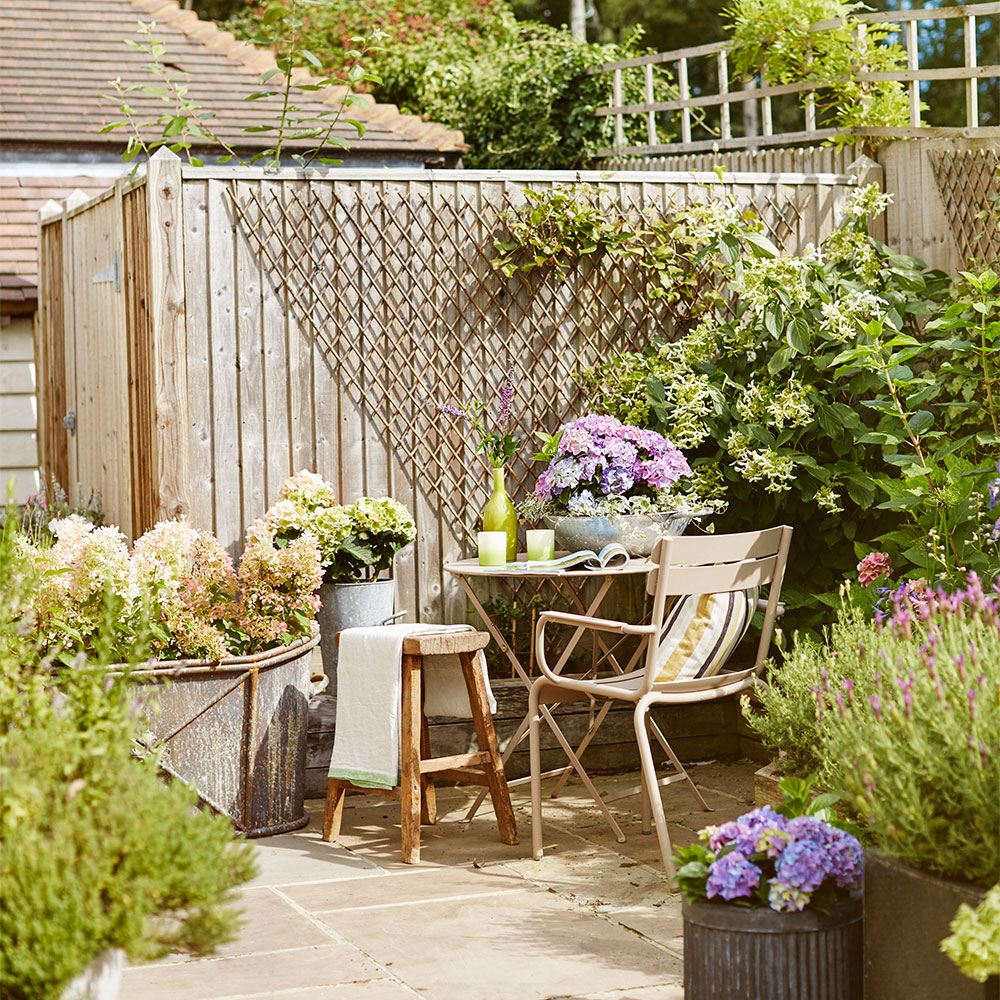
'A garden design is only successful if it sits comfortably in its surroundings' says James from The Garden Company. 'By using planting at the base of the house, garden walls and terraces, you can blend the boundaries between these ‘hard’ structures and the garden. This creates a softer, more pleasing effect which is more in keeping with the cottage garden style than straight lines.'
31. Fill borders with delphiniums
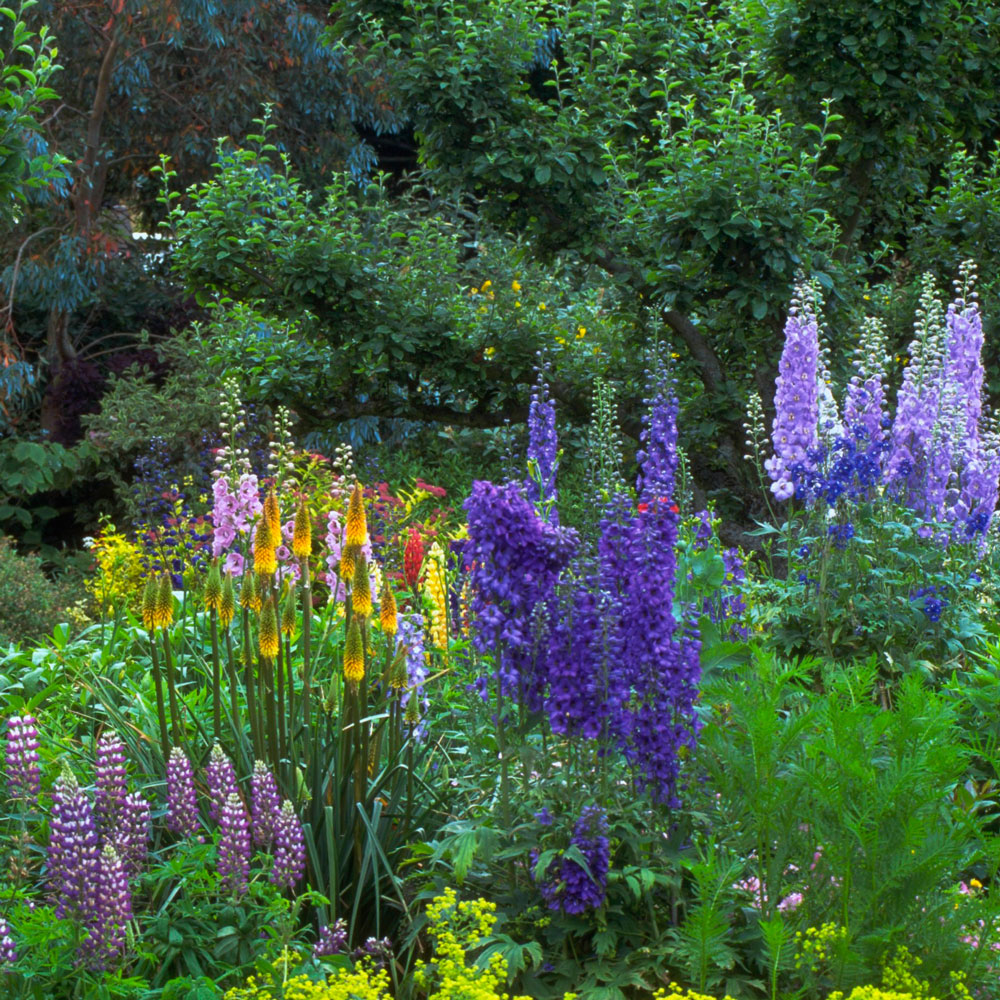
'Another cottage garden favourite, delphiniums come in stunning shades of white, pink and blue,' says Marcus from Dobbies. 'They will often flower for a second time later in the season. Grow through plant supports to hold their flower spikes secure.' Use delphiniums within borders to add height to your planting scheme.
32. Create structure with arches
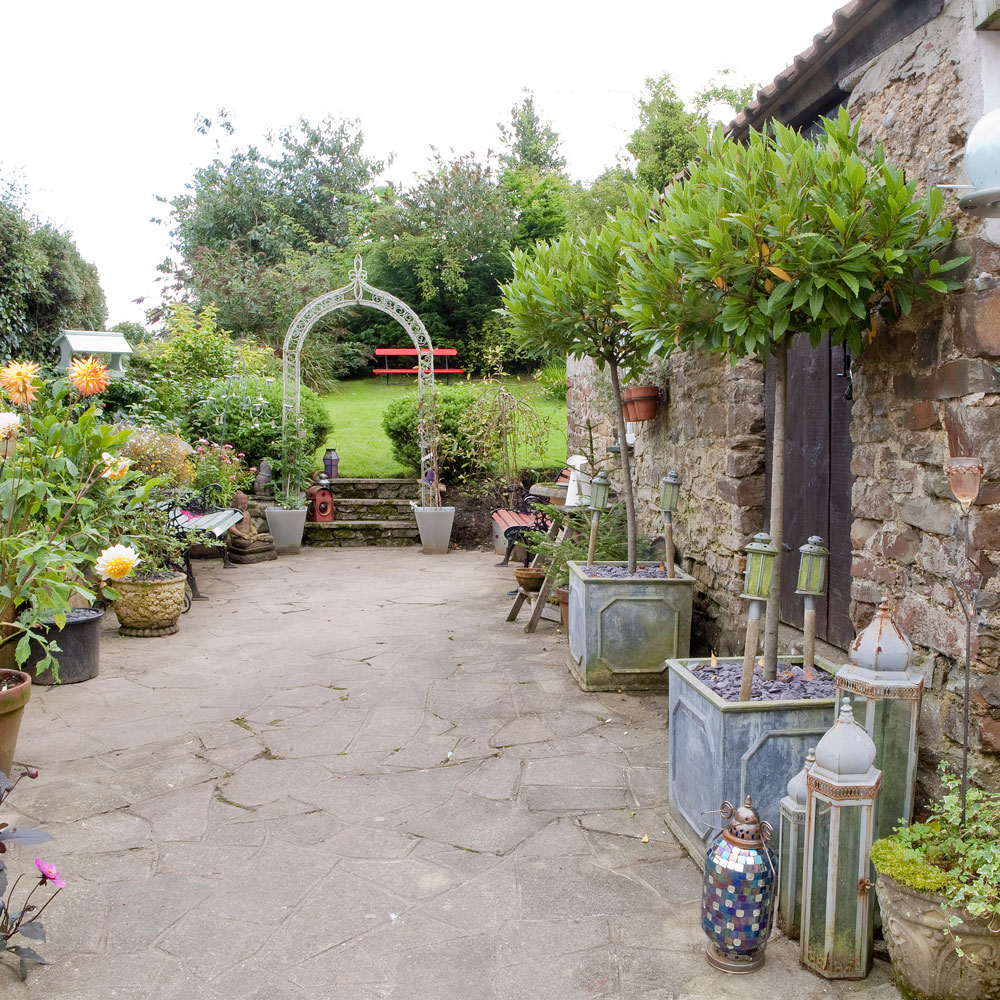
While cottage gardens in the main are relaxed and unstructured it can be beneficial to add key structures to aid planting and add a rustic touch with accessories. A metal arch or pergola is a great example, a style that suits a cottage garden scheme perfectly while at the same time providing support for climbing and trailing plants.
Place an archway over a step to highlight the joining of two different garden zones, helping to create a flow from one into the other.
33. Balance informal planting
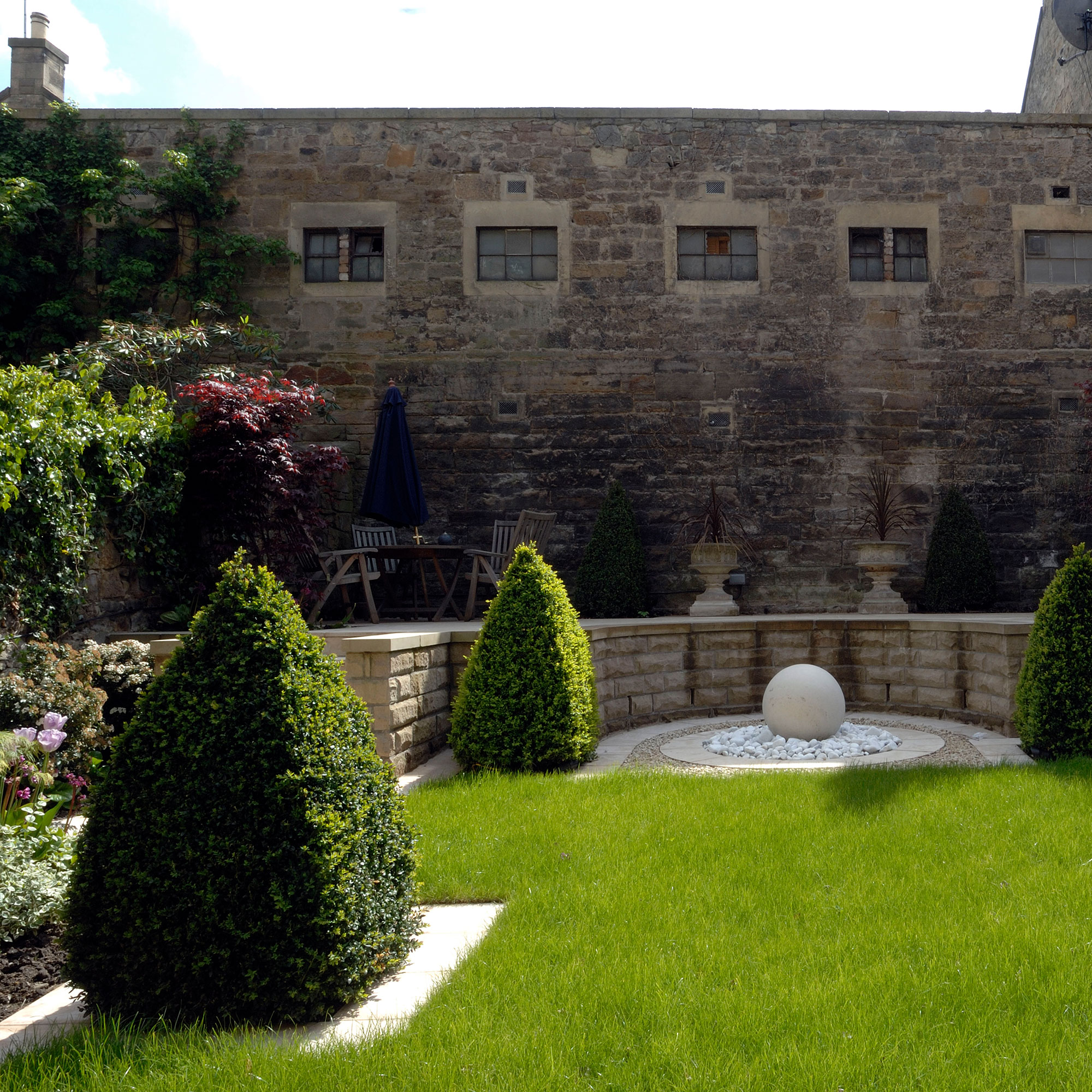
'Cottage gardens lend themselves to abundant and apparently informal planting. However, on its own and without structure this can look rather unkempt and haphazard for large parts of the year' advises James from The Garden Company. 'I love to use naturalistic plants in combination with more formal planting – yew, hedges, domes and hornbeam for example – which provide a vertical element, sculptural form and sense of order.'
'These all-year round ‘formal’ plants can be softened and framed with beautiful grasses such as calamagrostis brachytricha and deschampsia Bronze Veil, late flowering perennials (for example, verbena bonariensis and aster x frikartii 'Monch'). Broadly speaking, the grasses and perennials provide colour, texture and romance; the trees and hedges provide order.'
34. Immerse yourself among the planting
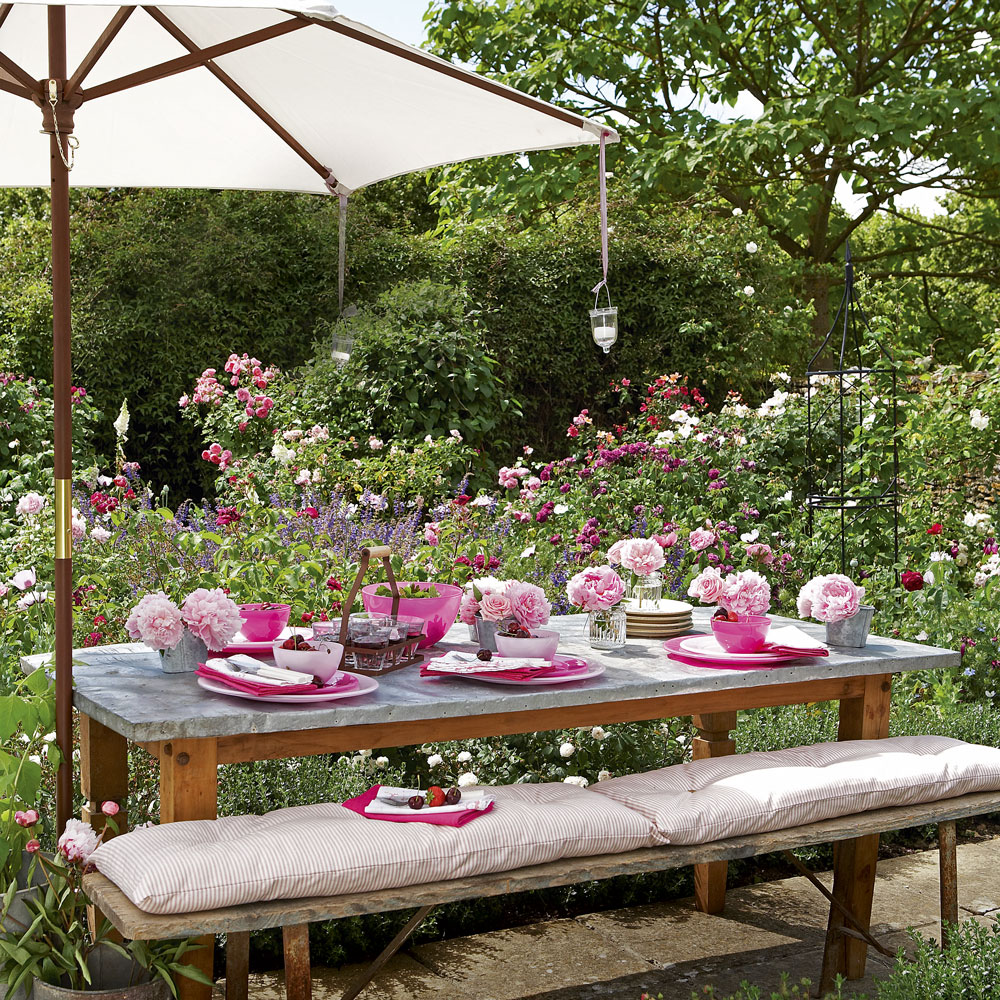
Take time to smell the roses. Immerse yourself fully within the the planting of a cottage garden by placing a dining table among the flower beds, with a parasol acting as a portable garden shade idea.
A cottage garden is filled with dense planting that lives wild and free, creating a canvas of colour and scent – ideal for pitching an entertaining spot beside, to ensure you're getting to enjoy the full extent of the beauty of the surrounding plot.
35. Make magical views
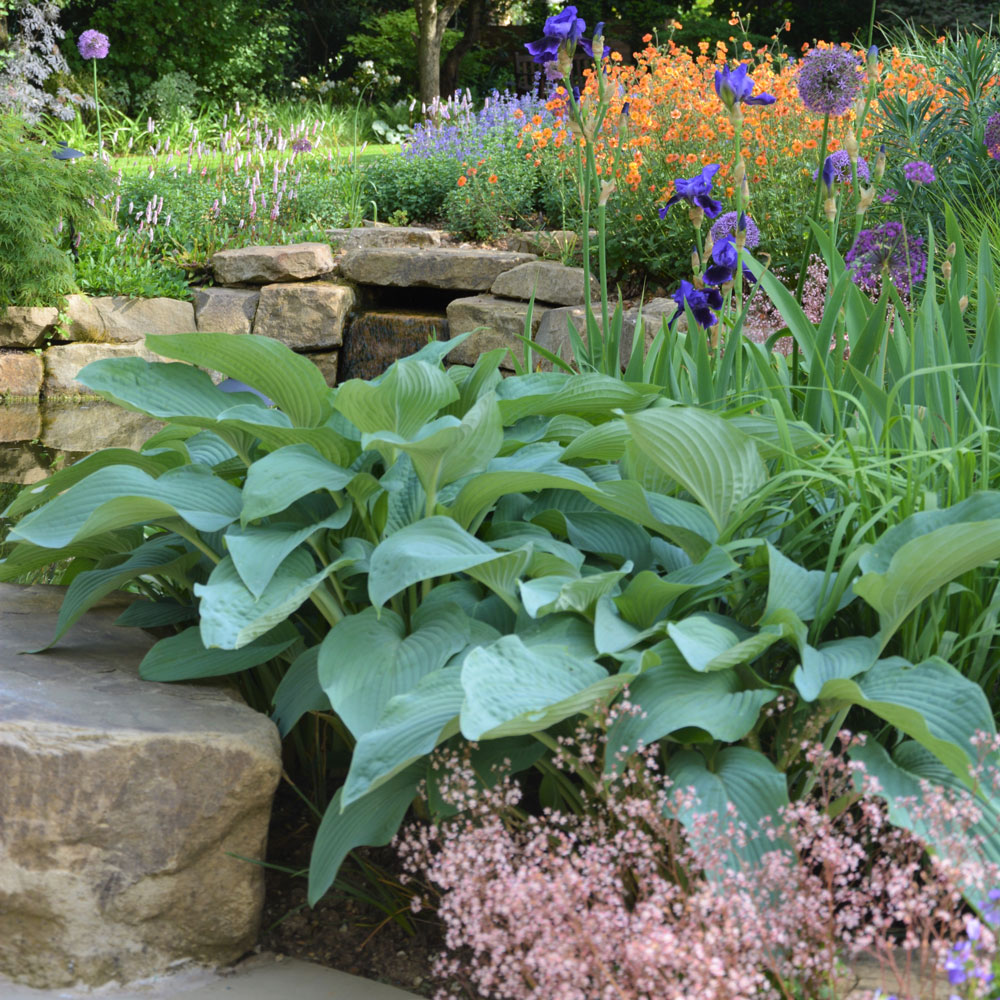
'Cottage gardens are inviting and attractive' explains James from The Garden Company. 'It’s important to make functional elements of the garden (e.g. paths, steps, raised borders) a pleasing aspect rather than just a necessary feature. For example, a simple path can become a sensory walkway by using a pergola and fragrant climbing plants. The whole effect is to frame the view to a gazebo and create a destination point.'
36. Make the most of front gardens
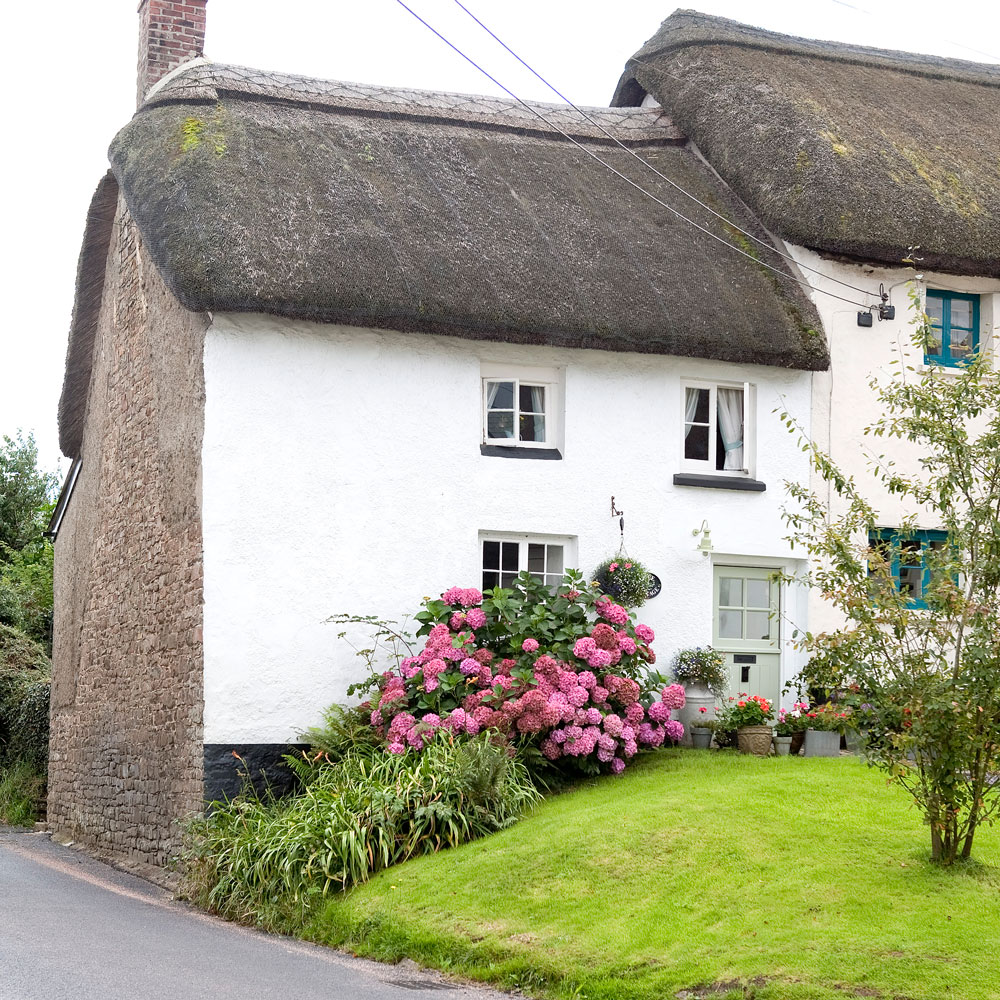
Don't neglect the front of your house – add pretty planting to your front garden ideas too. The exterior of this white thatched roof country cottage is beautifully enhanced by a free planting of shrubs, grasses and bedding plants to add uplifting colour. It's a good indicator from the front garden that the back garden will be bursting with colour and natural loveliness.
37. Set the scene with a charming arbour
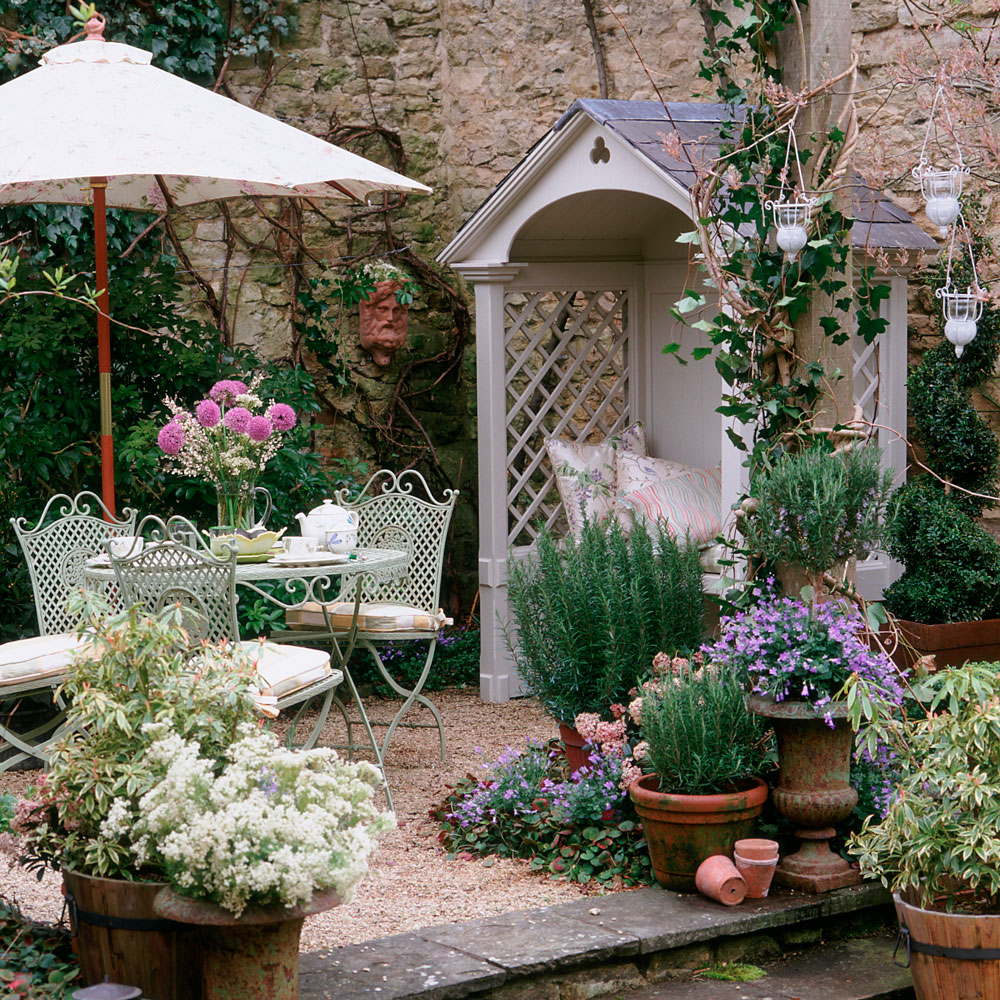
A cottage garden can be instantly identifiable from the furniture choices. Country-style furniture, from wrought iron bistro dining sets to ornate wooden arbours, adds a charming touch to set the scene for cottage garden planting.
38. Find a way to include water
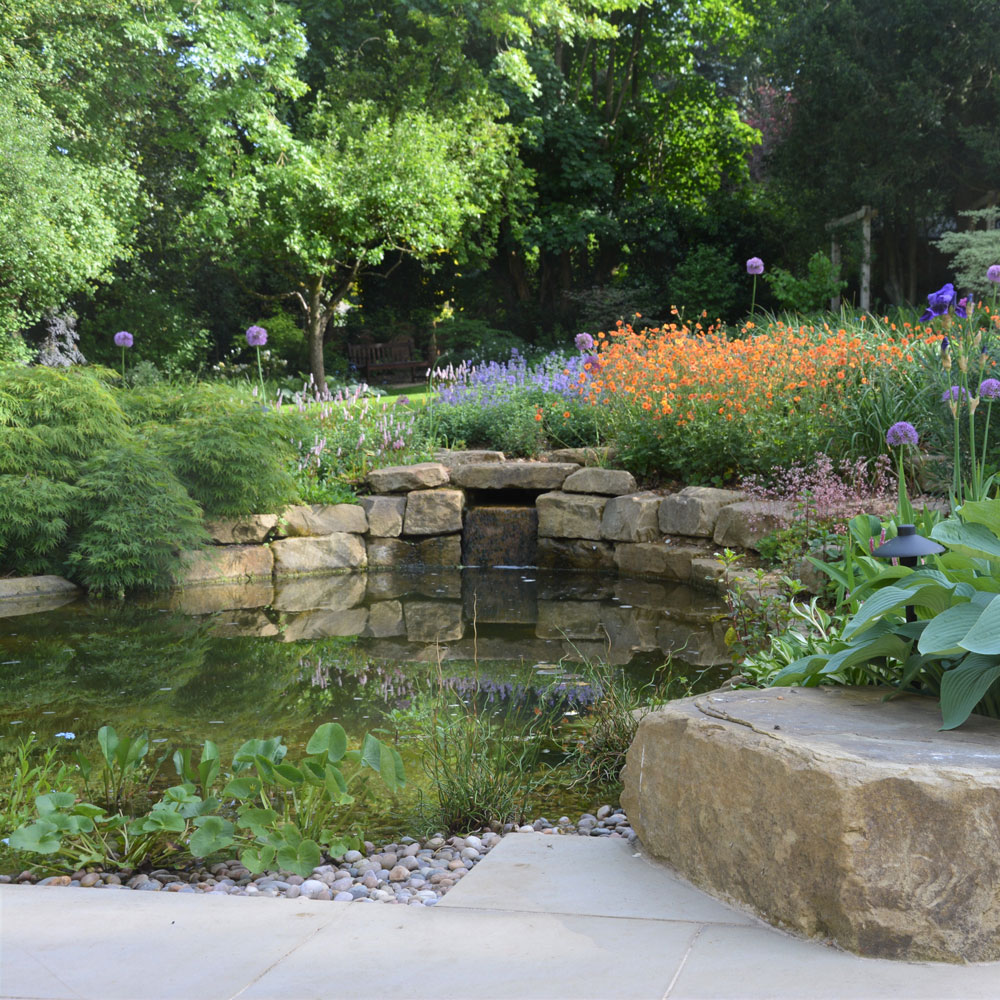
'As well as its obvious benefits to a garden, water can add huge value to your cottage garden experience' says James from The Garden Company. 'It provides a different habitat for many plants and creatures, has a cooling effect in the summer and adds a new dimension in the form of movement and reflections. Gentle sounds of moving water can also mask unwanted noise such as traffic and neighbours.'
39. Style garden accessories
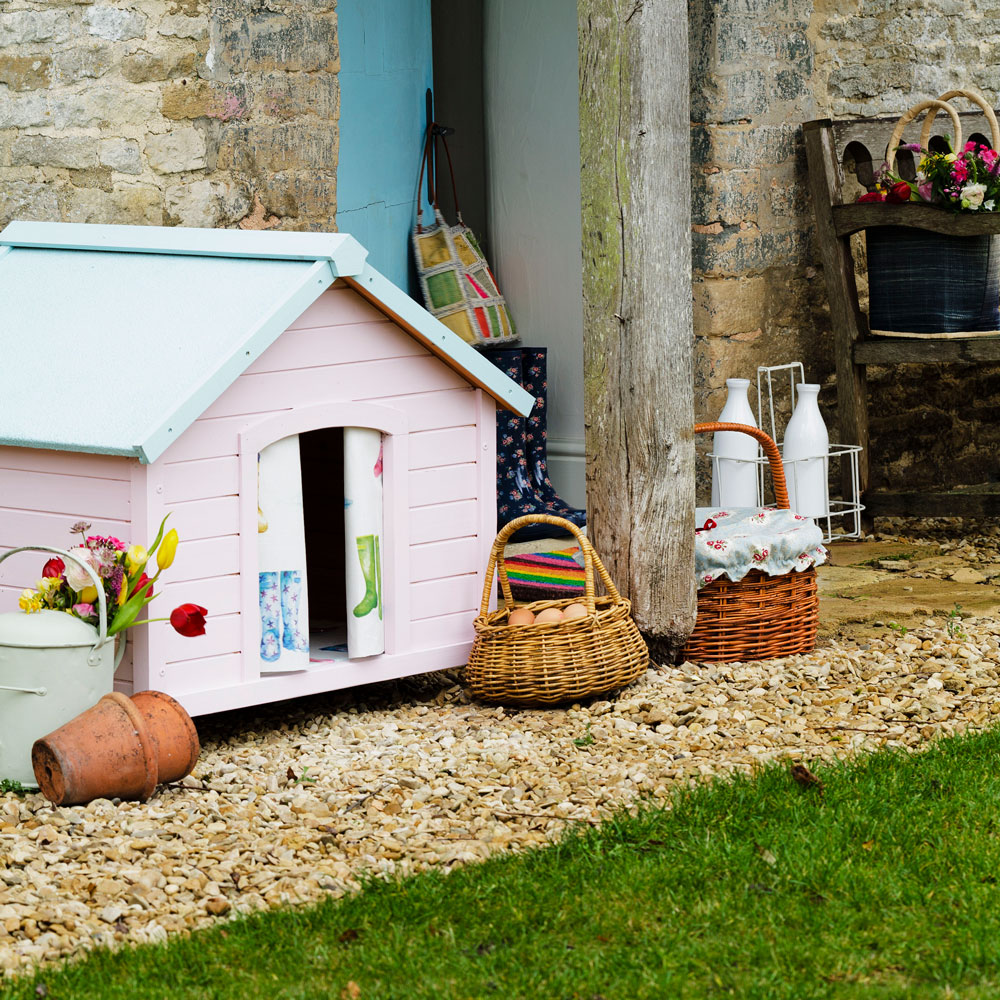
Twee maybe, but a kennel makeover is a sweet way to enhance the look of a cottage-style garden. Use garden paint ideas, preferable a soft pastel to coordinating a planting colour scheme, and sweet fabric door curtains will make a dog kennel offer so much more to the space.
40. Pretty up a potting shed
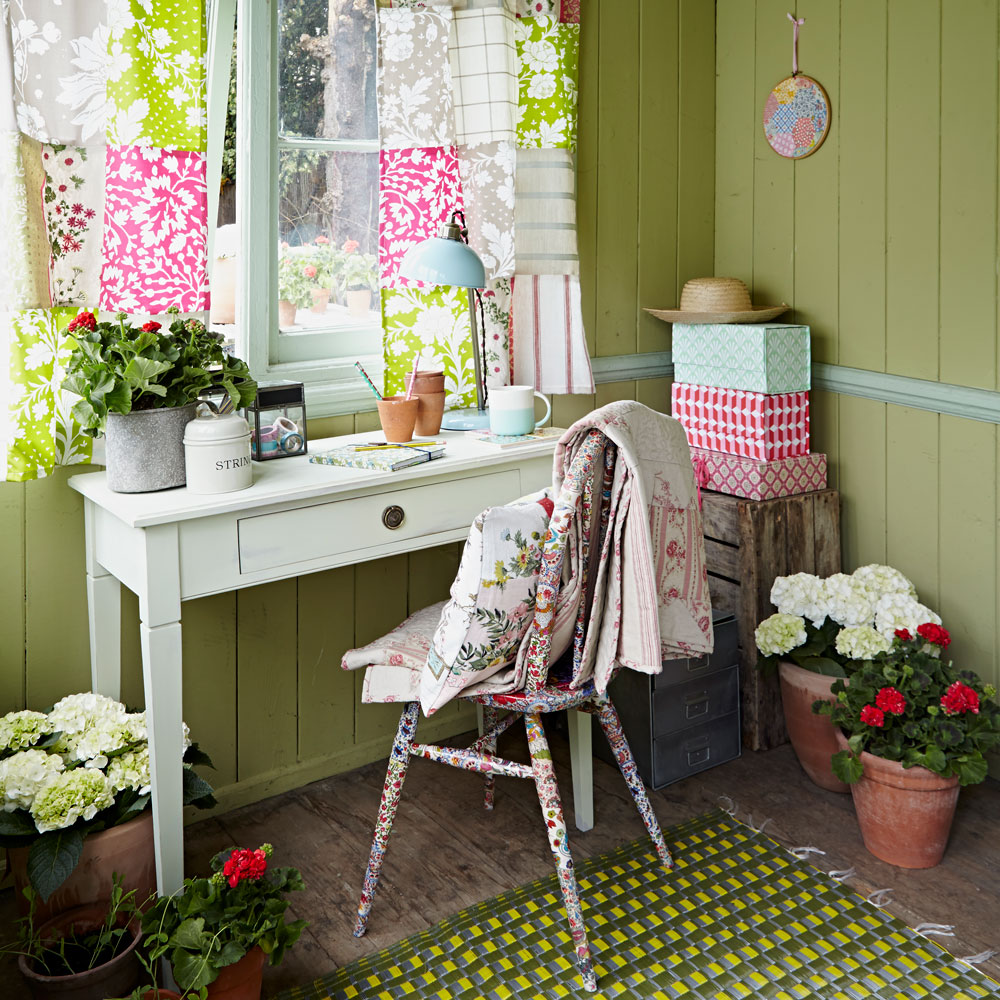
What cottage garden would be complete without a picturesque summerhouse or she shed? Up the cottage-style decor by adding a lick of paint in an invigorating shade of green and introduce floral print fabrics to soften the interior to make it feel more like a homely cottage.
What is cottage garden style?
To get that cottage garden look, you’ll want to focus on letting your space come together naturally. For example, instead of having your plants arranged from shortest to tallest mix them up to create a more organic look.
‘Overall, creating a cottage garden requires a blend of careful planning and a relaxed approach,’ explains Georgina from Paving Superstore. ‘It's not about striving for perfection, but rather cultivating a sense of whimsy and nostalgia. By choosing the right paving, planting perennials and annuals, using traditional fencing and adding some sculptural interest and water features, you can create a charming and inviting space that captures the essence of a classic cottage garden.’
‘Cottage gardens weren't designed to simply look pretty. They were mainly comprised of planting areas with a focus on growing fruit and vegetables, alongside companion planting that often had practical purposes, such as medicinal value,’ she reveals.
How do I start a cottage garden from scratch?
Dobbies Horticultural Director, Marcus Eyles, reveals his step by step guide for creating a cottage garden:
- Prepare the soil 'First prepare the soil for planting by forking in plenty of manure or garden compost and remove any weeds.'
- Select your plants 'Choose your favourite cottage garden plants, mixing heights, colours, textures and flowering times. A mixture of flowering and foliage plants works well, including annuals and cut flowers'.
- Plan a planting layout 'Position in drifts for a natural look, planting shorter ones towards the front and taller ones behind. Self-seeding plants such as foxgloves and verbenas are a great way to knit the border together.'
- Put in place and water 'Using a garden spade, plant each to the same depth as its growing pot. Firm gently and water well, then add a layer of mulch around your plants to help retain moisture.
- Provide support 'As they grow, insert canes or metal plant supports around taller flowering plants to keep them secure in strong winds. Put them in early in the season and they’ll soon be disguised by foliage.
- Nurture and prune Cut back faded stems in autumn. Then in spring, fork in some general fertiliser and add a fresh layer of mulch.
What plants make a cottage garden?
A classic cottage garden is never complete without a variety of roses. The main pruning period for all roses is spring, depending on location in the UK – usually early in March in the south, and around the end of March in the north.
In addition to roses foxgloves and delphiniums are also hugely popular for cottage gardens. 'A classic cottage garden is filled with pastel shades, roses, foxgloves and delphiniums to name a few,' notes Marcus from Dobbies.
'Loved by bees and butterflies, your garden will be brought to life with the gentle sound of buzzing and humming – a joyous backdrop to soak up summer sunshine in.'
Tamara was Ideal Home's Digital Editor before joining the Woman & Home team in 2022. She has spent the last 15 years working with the style teams at Country Homes & Interiors and Ideal Home, both now at Future PLC. It’s with these award wining interiors teams that she's honed her skills and passion for shopping, styling and writing. Tamara is always ahead of the curve when it comes to interiors trends – and is great at seeking out designer dupes on the high street.
- Ellis CochraneContributor
-
 Should your front door colour match your hallway? Interior experts reveal 3 reasons why it should (and 3 reasons it shouldn't)
Should your front door colour match your hallway? Interior experts reveal 3 reasons why it should (and 3 reasons it shouldn't)Are you team matching or contrasting?
By Ellis Cochrane
-
 This £200 limited-time discount makes this Dyson vacuum cheaper than I’ve ever seen it - run don’t walk to Argos for this bargain
This £200 limited-time discount makes this Dyson vacuum cheaper than I’ve ever seen it - run don’t walk to Argos for this bargainIt's the most affordable Dyson on the market right now
By Lauren Bradbury
-
 Martin and Shirlie Kemp’s pastel flower beds has given their Victorian renovation a romantic look - how you can get the look
Martin and Shirlie Kemp’s pastel flower beds has given their Victorian renovation a romantic look - how you can get the lookTheir pastel garden is the cottage garden inspo you've been looking for
By Kezia Reynolds